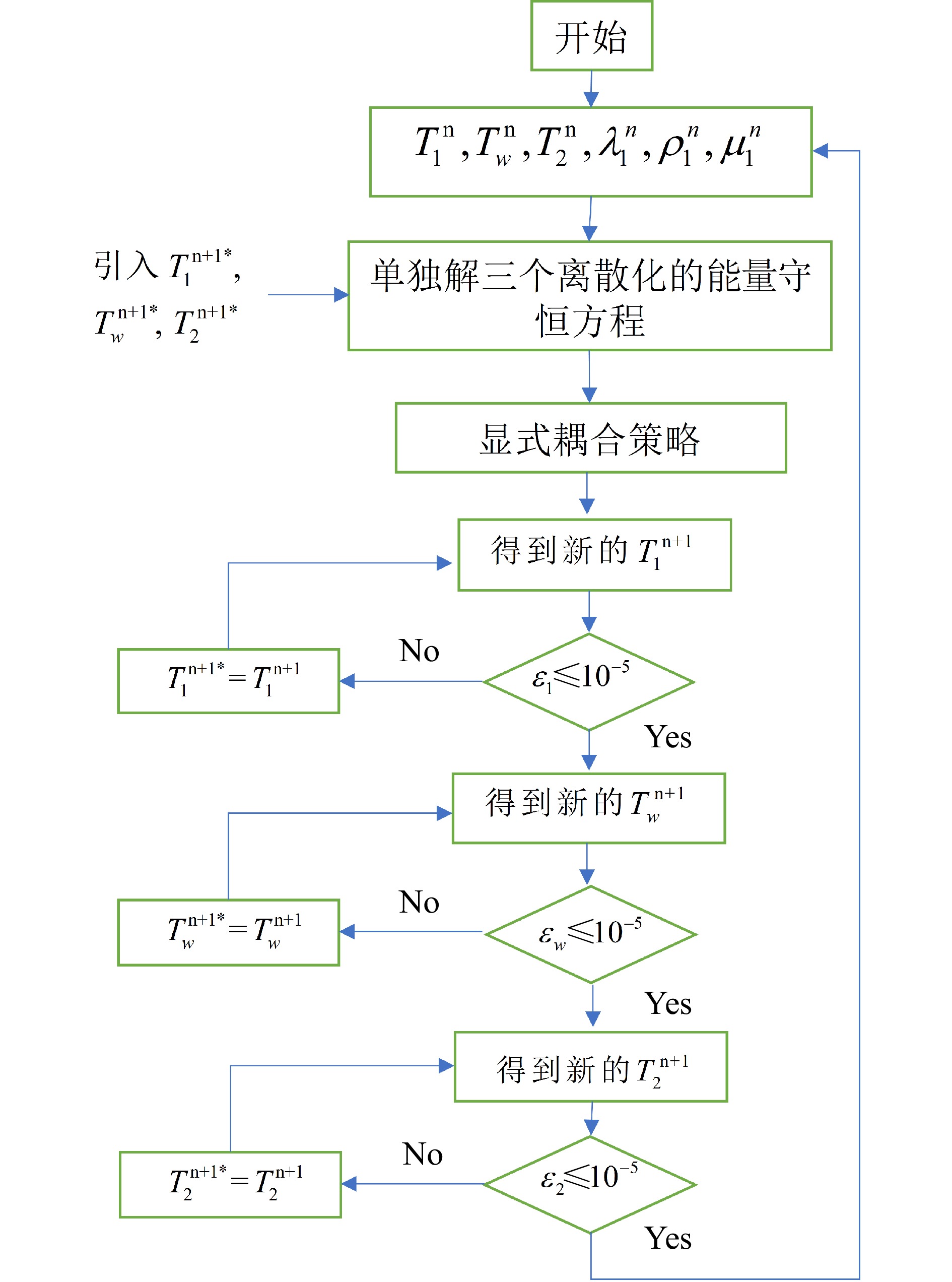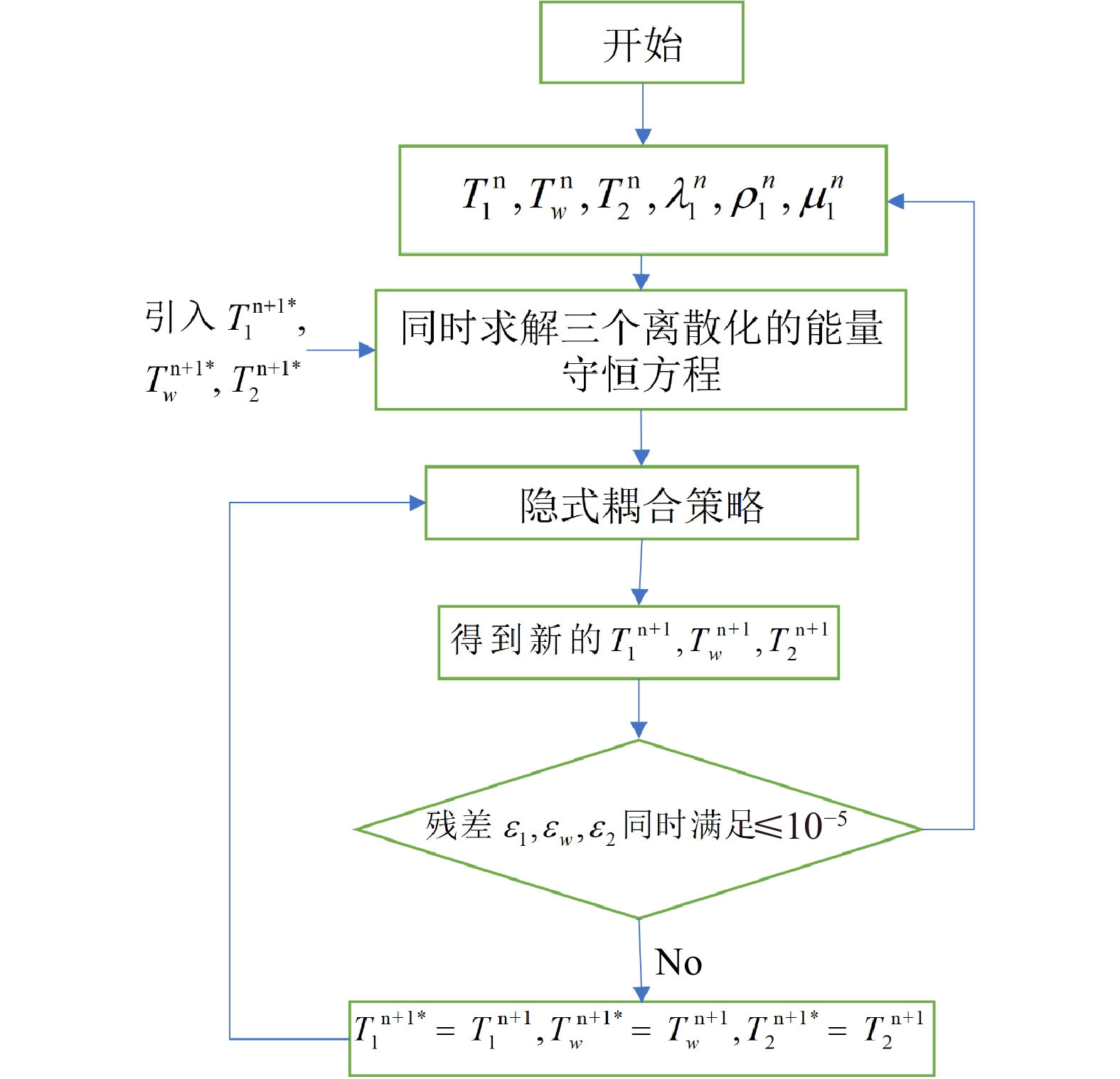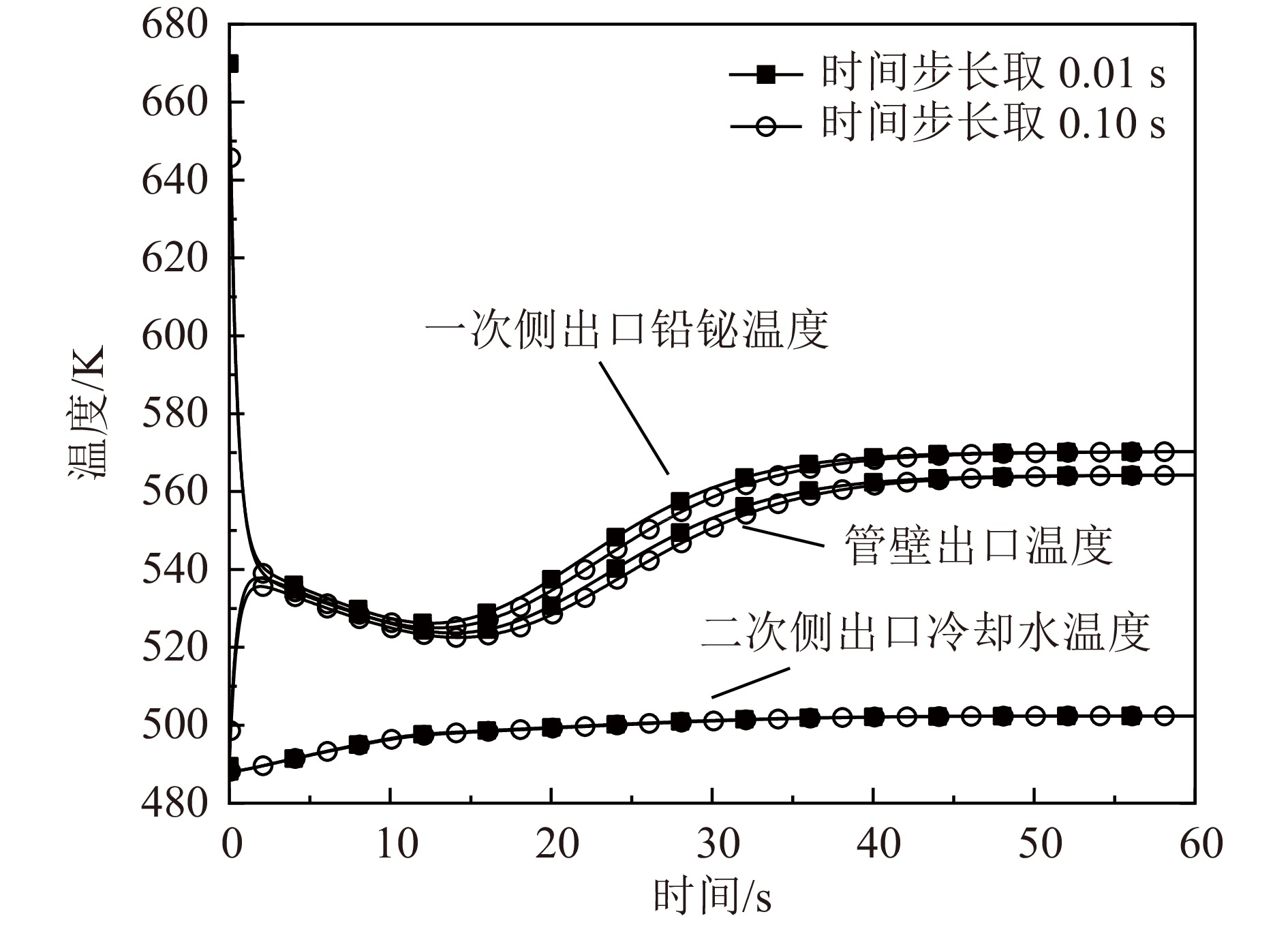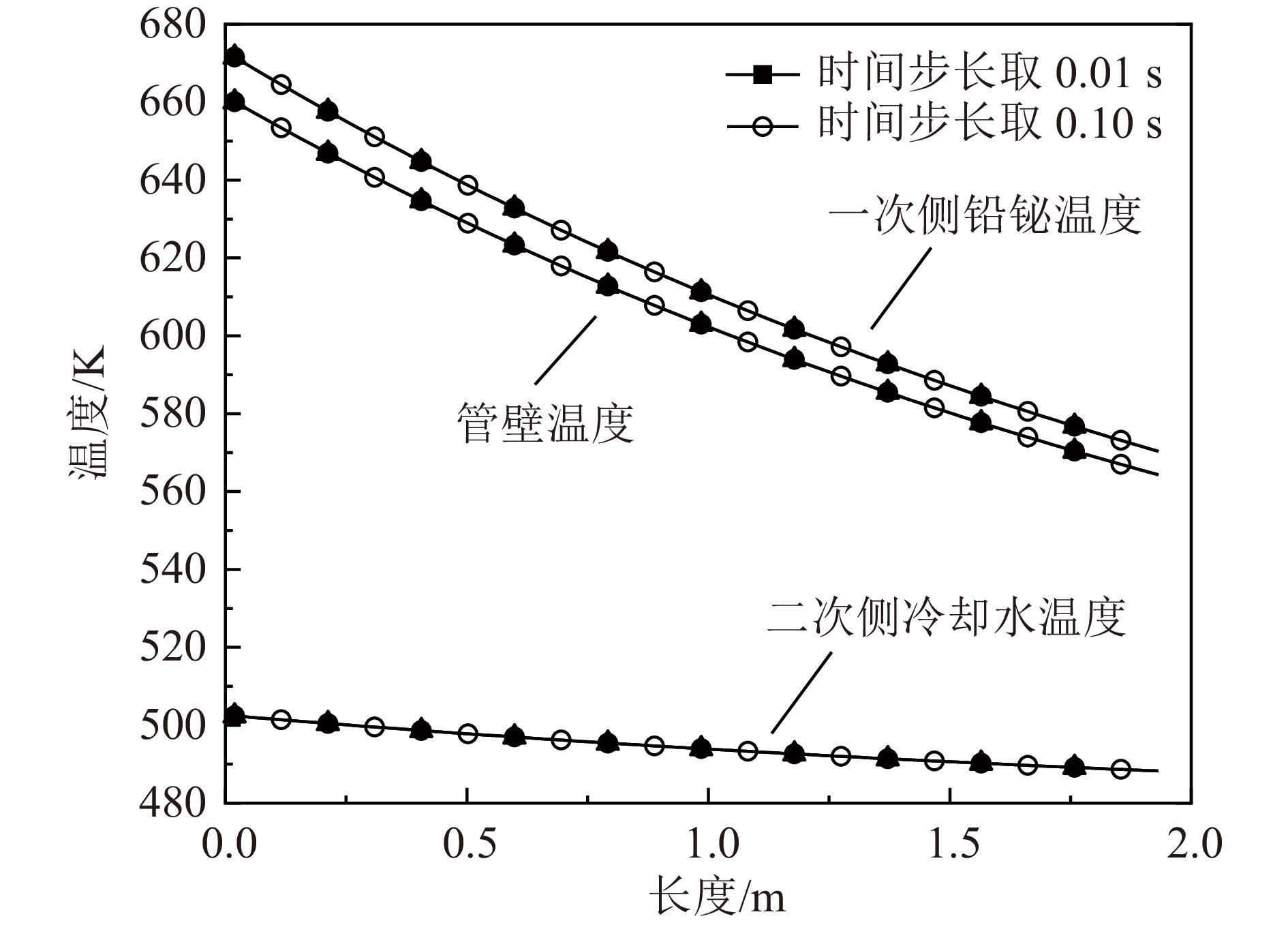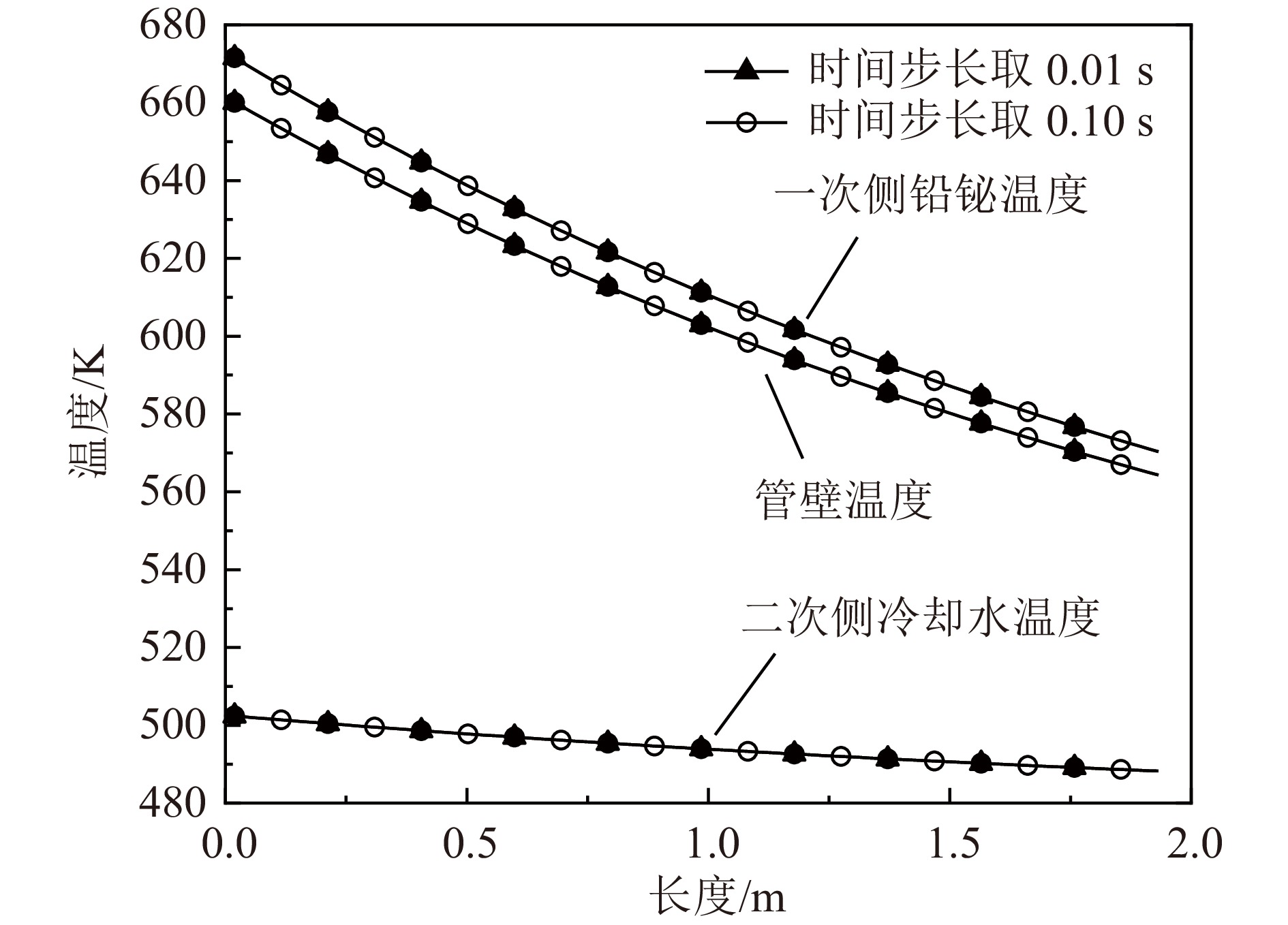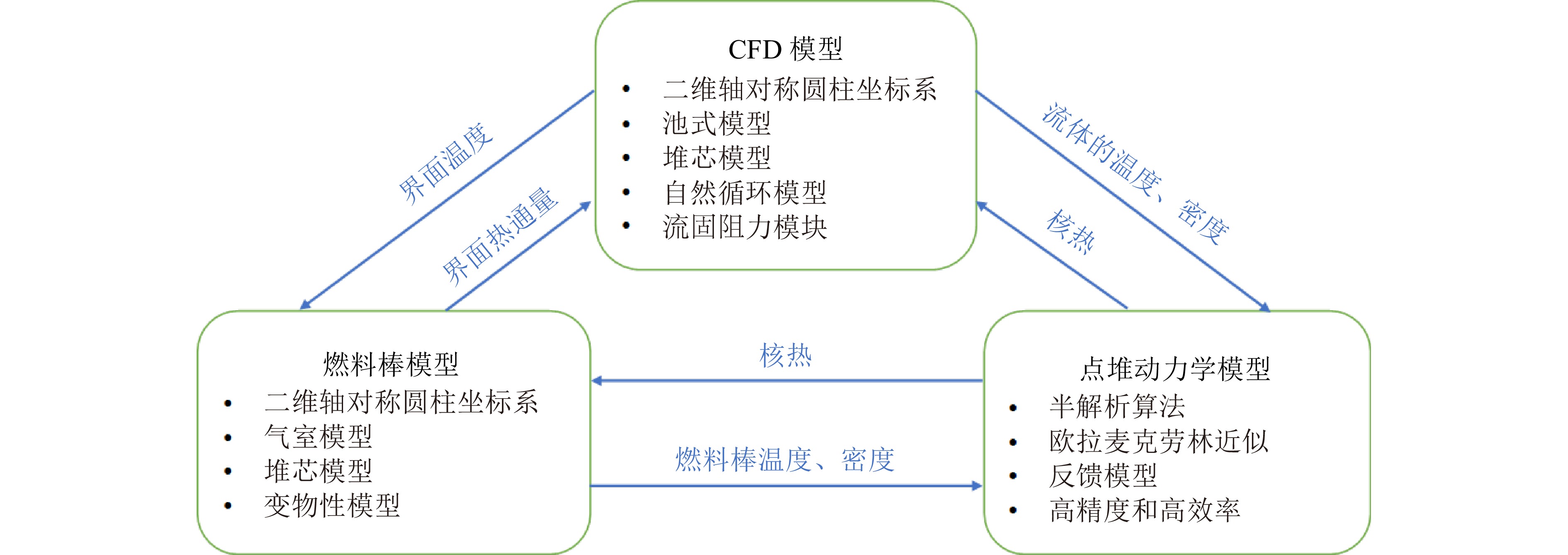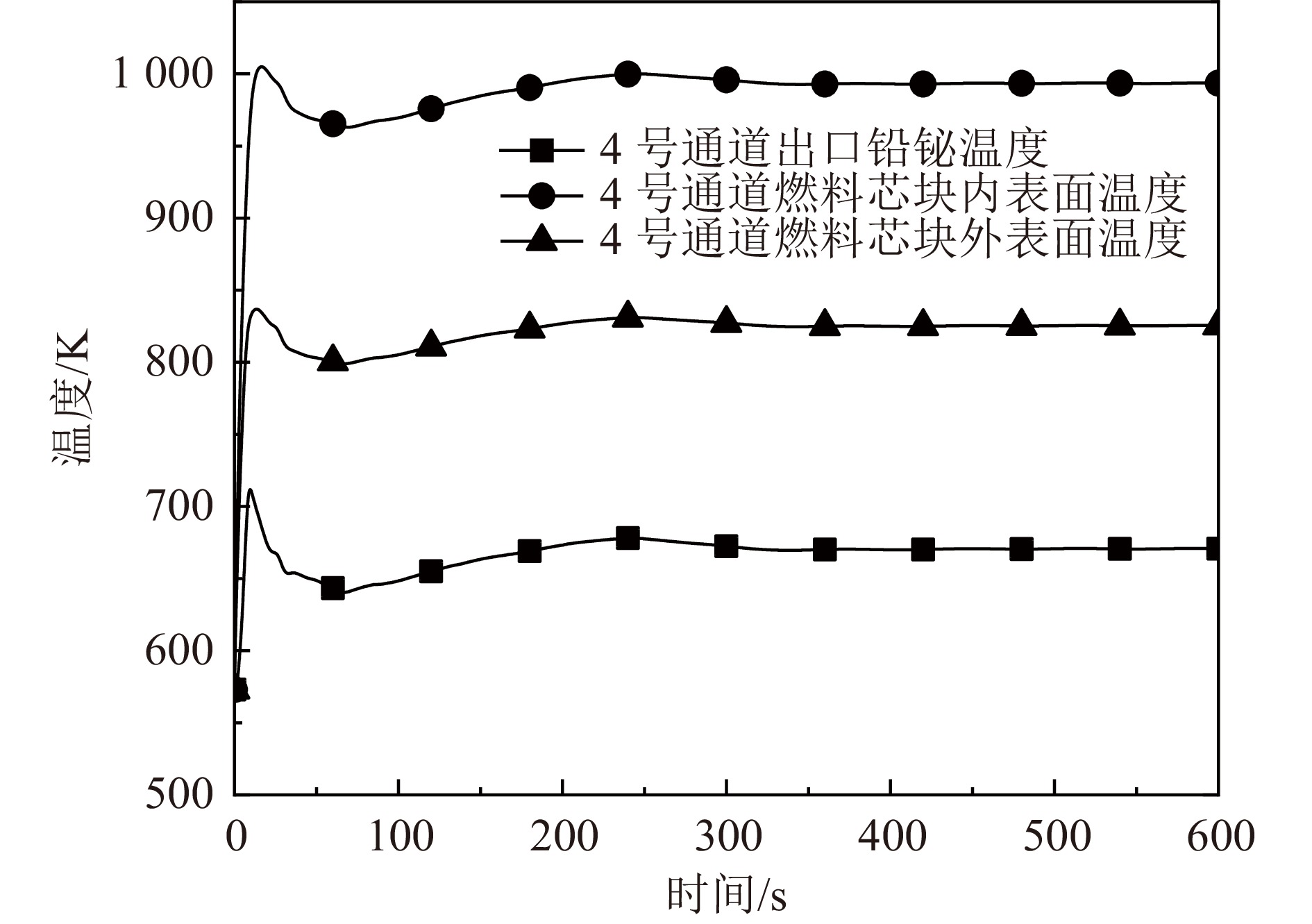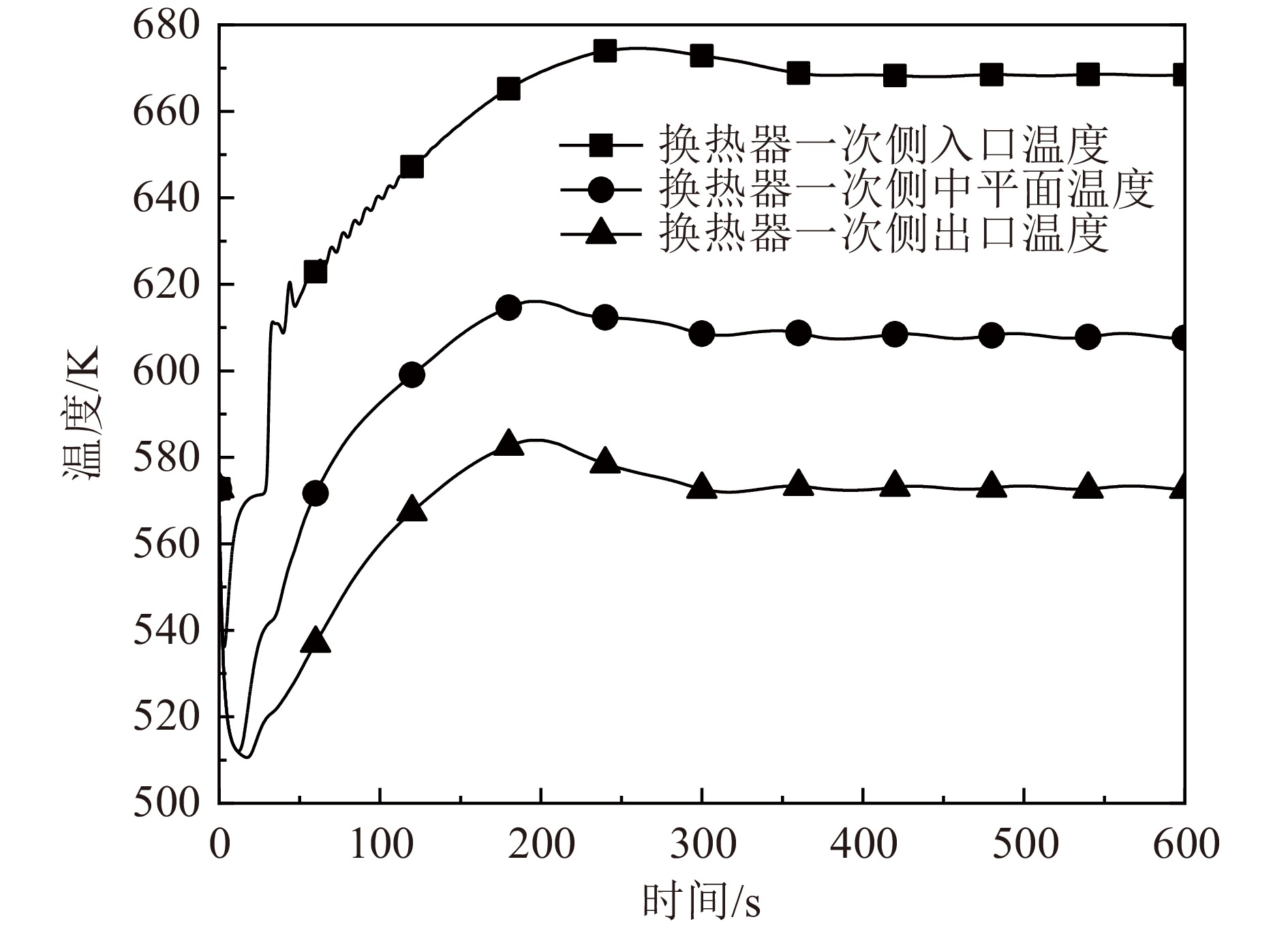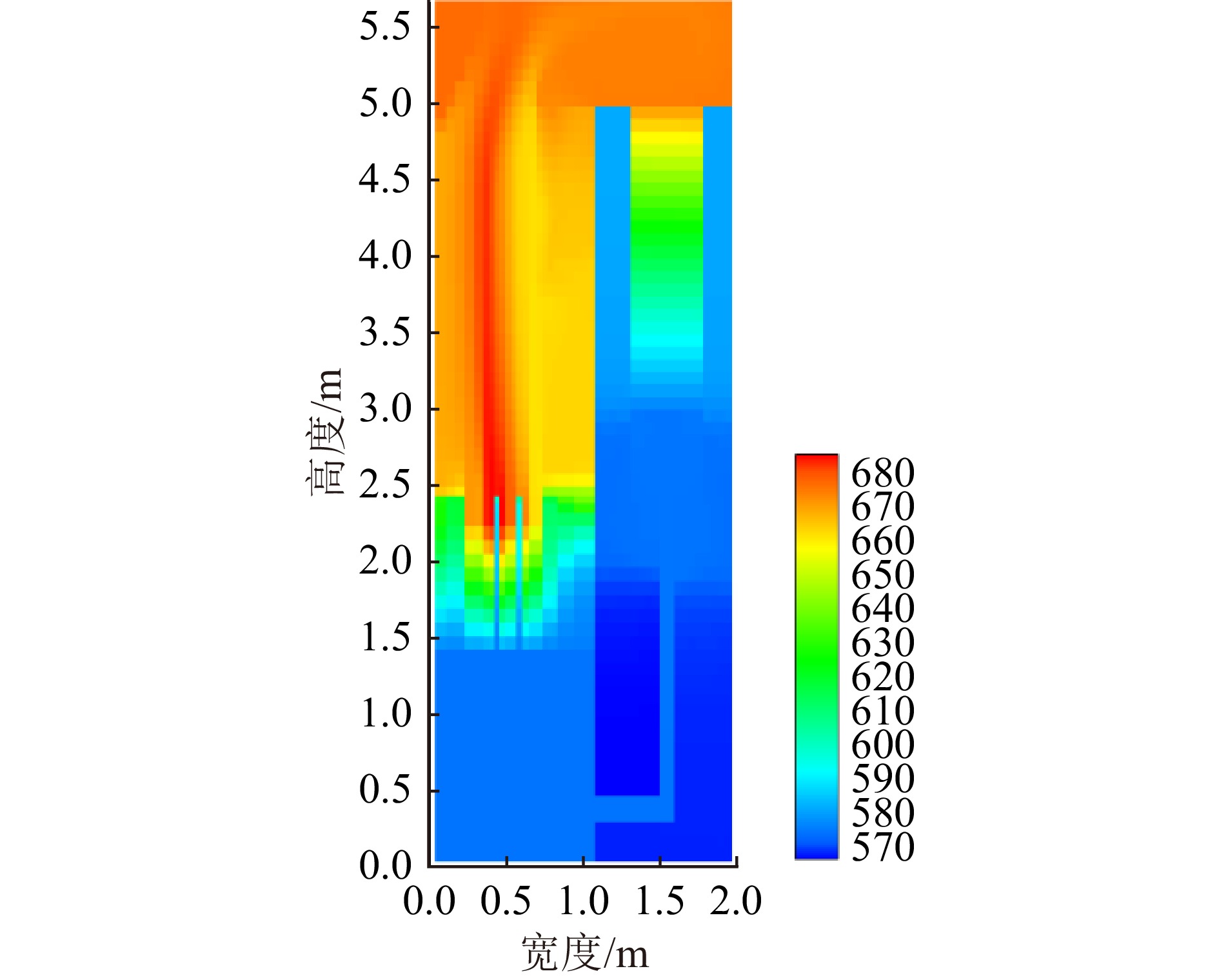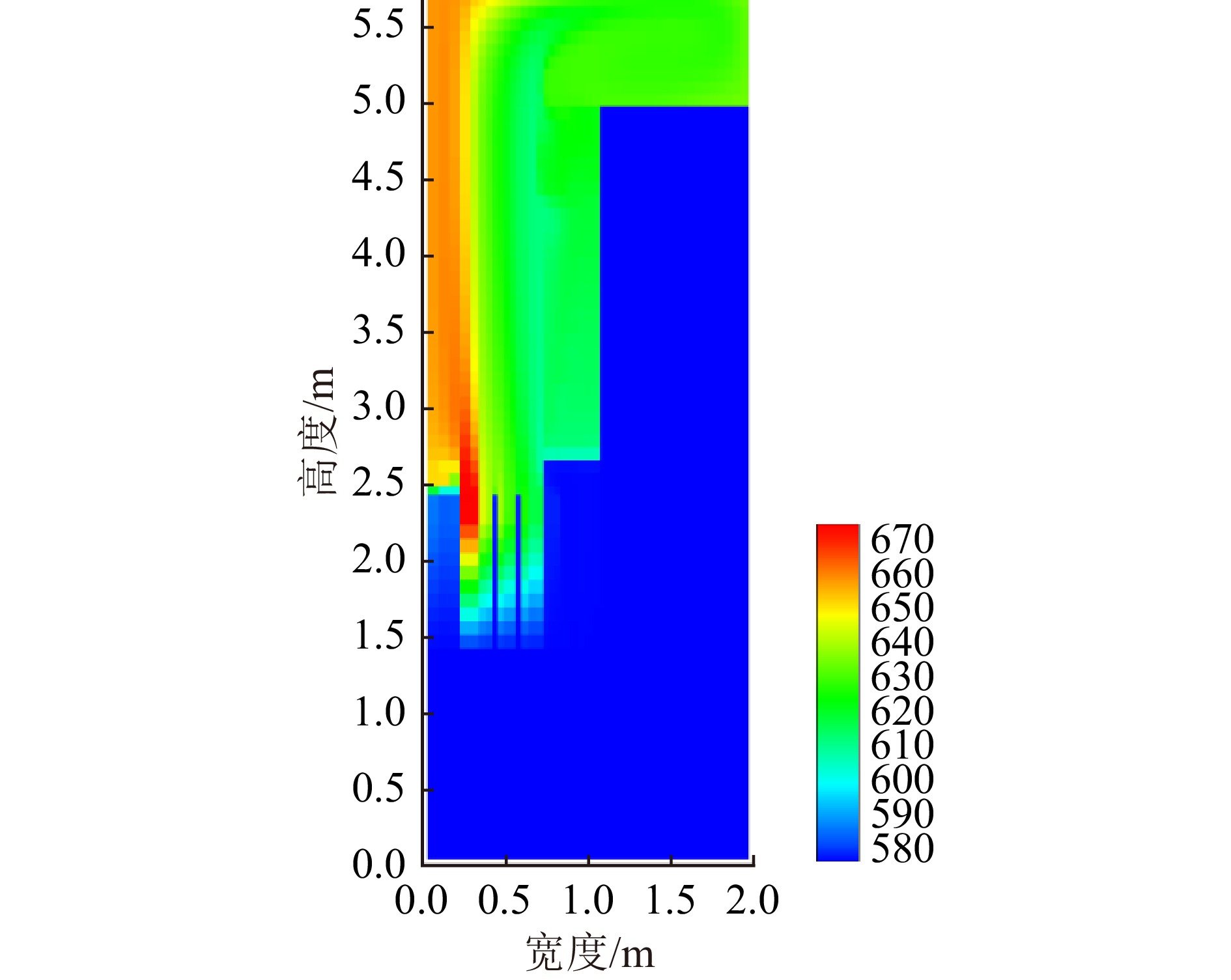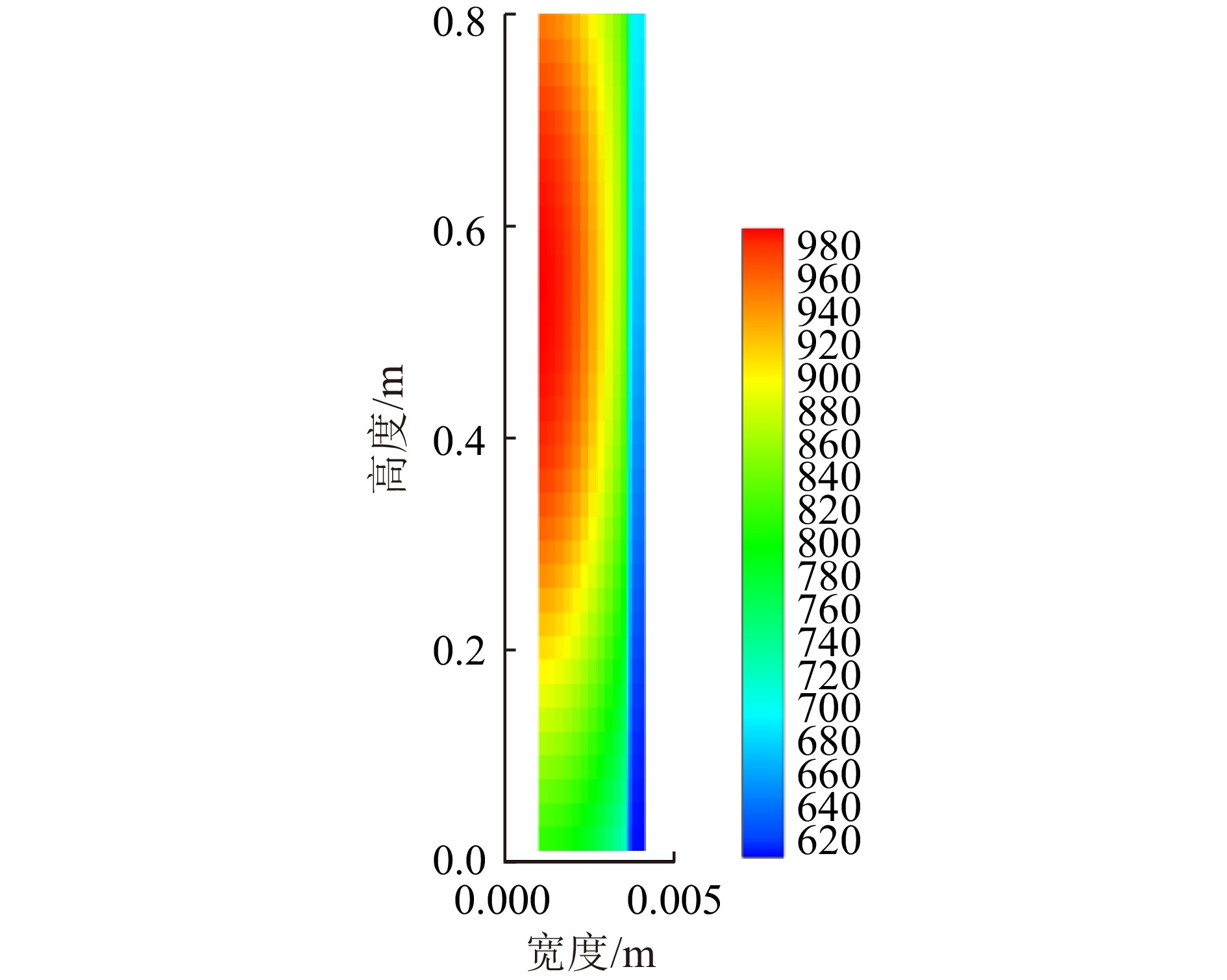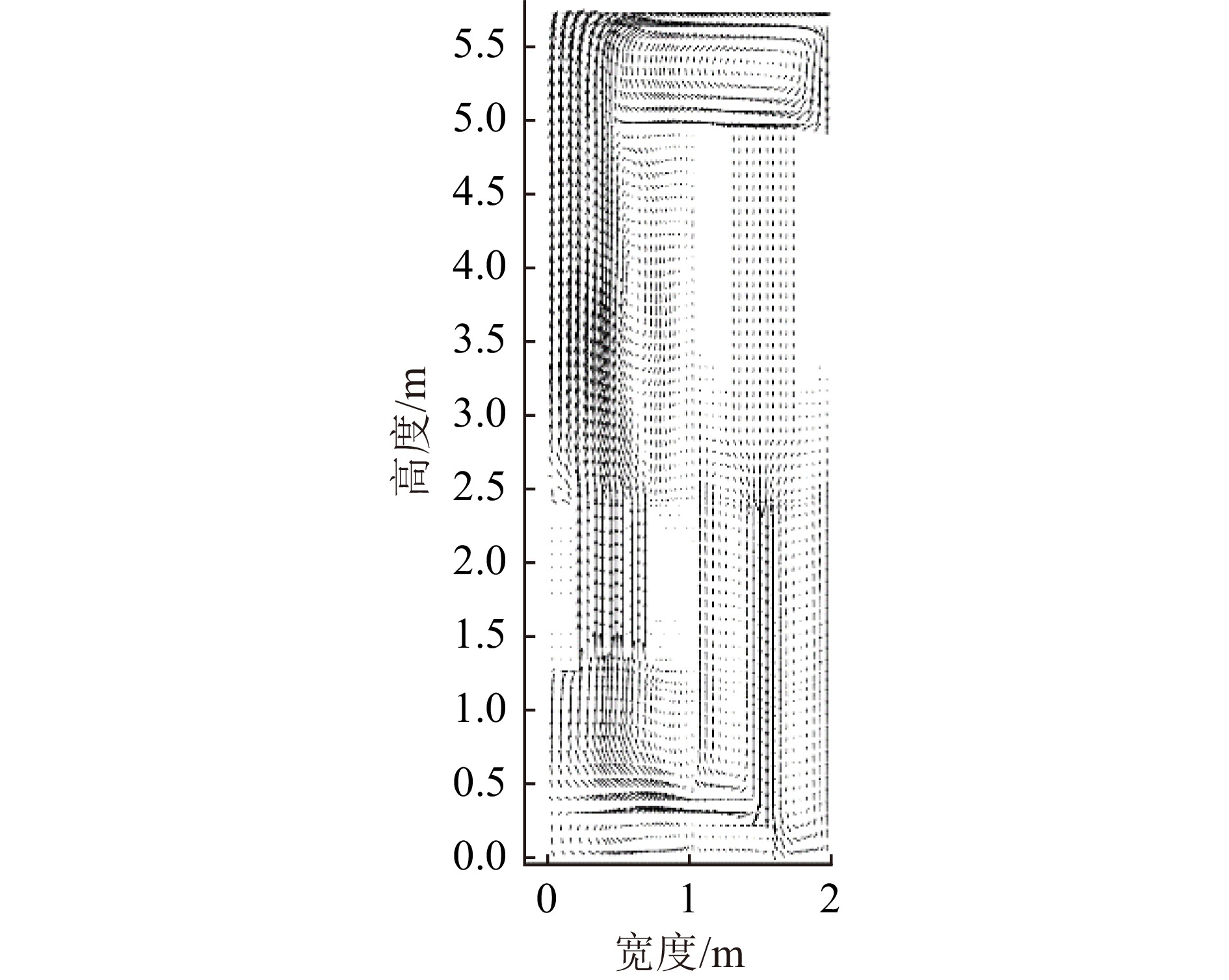-
以铅基材料(铅或铅铋共晶合金)作为冷却剂的铅铋反应堆,因其独特的优良经济性和固有安全性[1],被纳入了第四代先进核能系统候选堆型,并作为其主力堆型之一[2-3]。为提高其紧凑型、安全性,铅铋堆主冷却剂系统倾向采用一体化池式结构设计理念,但这一设计理念同时也造成了复杂的热工水力问题,如上/下腔室热分层问题和气体夹带问题等。为应对池式堆中涉及的这些特殊热工水力学问题,成都理工大学课题组[4-6]开发了基于CFD方法的多物理耦合瞬态安全分析程序MPC _LBE。但由于MPC_LBE程序换热器模型过于粗糙,采用了定温简化模型,即无论换热器一次侧入口温度如何变化,一旦其进入换热器后则立即变为人为设定值,造成模拟结果过于保守,尤其是事故瞬态工况,其模拟结果与实际情况偏差较大。为解决此问题,本文开展了铅铋堆换热器模块开发,构建了其数值传热模型,并将其与MPC_LBE程序进行了外部显式耦合。
本文建立的数值传热模型中的一次侧、管壁及二次侧均采用一维通道等效处理。首先对换热器仿真模块单独进行稳态验证,评价该程序的可行性和准确性。并基于显式和隐式两种耦合策略对换热器仿真模块进行时间步长敏感性分析。最后,对耦合了该换热器仿真模块的MPC_LBE程序进行了自然循环铅铋堆稳态模拟应用。
-
铅铋堆换热器主要分为套管式和螺管式换热器[7-8]两大类,本文以中国科学院核能安全技术研究所设计的双层套管式换热器进行数值计算模型构建,其简图如图1所示,其相关设计参数可见表1[9-10]。在模型构建时,对换热器的管道进行了简化处理,即将142根管道等效为单管通道,同时,将其中的一次侧、管壁和二次侧以一维通道的形式表示,二次侧则采用开式通道。一次侧铅铋和二次侧高压过冷水互为逆向流动,且均与外界绝热,如图2所示。一回路的高温铅铋冷却剂在换热器套管的壳程(一次侧)内流动,将热量传递给套管管程(二次侧)内的二回路高压过冷水,即实现一次侧与二次侧间的传热耦合。其中,二次侧采用压力为4 MPa的加压过冷水,入口温度为488.15 K,出口温度为503.15 K。一次侧铅铋的入口设计温度为673 K,出口的设计温度为573 K。
名称 单位 壳程 管程 入口温度 K 673 488.15 出口温度 K 573 503.15 流量 kg·s−1 158.844 40.21 压降 Pa 863.33 17 503 传热面积 m 25.86 / 换热管数量 根 142 / 换热管规格 mm 外管:∅30 × 2.5 / mm 内管:∅25 × 2.5 / 换热管有效换热长度 mm 1932 / -
换热器套管流动换热的控制方程仅考虑能量守恒方程,一次侧、二次侧及管壁的控制方程分别如下所示:
式中:ρ为密度,单位为kg/m3;Cp为比热容,J/(kg·K);T为温度;z为单位结点长度,单位为m;v为流体流动速度,单位为kg/m;λ为热导率,单位为J/(m·K);t为时间;q为对流换热项(下标1、w和2分别对应换热器一次侧铅铋、管壁和二次侧高压过冷水)。
-
在套管式换热器中有两个对流换热模型,分别为一次侧与管壁之间的对流换热模型式(4)及管壁与二次侧之间的对流换热模型式(5)[11]:
其中:铅铋与管壁之间的努塞尔数关系式表示如下[12-15]:
式中:h为对流换热系数;Nu为努塞尔数;Re为雷诺数;Pe为贝克莱数;Pr为普朗特数。
-
液态铅铋的密度、动力粘度及热导率等物性参数均来自公开发布的拟合公式[21],依次表示如下:
管壁材质为不锈钢,二次侧过冷水和管壁的相关物性参数均为常数,分别如表2和表3所列[7-8]。
参数 数值 ρ2 /(g·m−3) 1 000 Cp,2 /J·(kg·K)−1 4.2×103 λ2 /W·(m·K)−1 0.645 μ2 /(Pa·s) 124.6×10−6 参数 数值 ρw /(g·m−3) 7.93×103 Cp,w /[J·(kg·K)−1] 4.6×103 λw /[W·(m·K)−1] 21.5 -
从前述方程(1)、(2)及(3)中可看出,一次侧液态铅铋、管壁和二次侧水三者温度是相互耦合关联的,对此本文采用了显式耦合、隐式耦合两种方案。显式耦合和隐式耦合在算法上的不同主要表现在三个能量守恒方程中对流换热项离散化的形式不同,且在同一时间步长下显式耦合算法是一次侧、管壁和二次侧依次单独迭代计算求解,如图3所示。而隐式耦合则是将三个能量守恒方程同时进行迭代计算求解,因此隐式耦合算法比显式耦合算法更复杂,但计算结果更准确,算法步骤如图4所示。
-
在验证方法上采用铅铋堆换热器的稳态运行参数进行程序验证,换热器一、二次侧入口设置为边界条件,因此验证的关注点便是换热器的一、二次侧出口温度。为评价耦合方案的性能,采用了0.01,0.10 s两种时间步长开展时间步长敏感性分析。
-
图5给出了在两种时间步长下换热器出口面一次侧、管壁、二次侧的温度随时间的变化情况,当时间达到50 s时,三者的温度基本达到稳定。稳态下换热器一次侧、管壁、二次侧的轴向温度分布如图6所示,均与设计值符合较好。同时,由图6可以看出显式耦合方案的时间步长敏感性较为显著,尤其是一次侧及管壁温度。
-
图7给出了在两种时间步长下换热器出口面一次侧、管壁、二次侧的温度随时间的变化情况,当时间达到50 s时,三者的温度基本达到稳定。稳态下换热器一次侧、管壁、二次侧的轴向温度分布如图8所示,同样,均与设计值符合较好,且可以看出隐式耦合方案几乎不存在时间步长敏感性问题。
-
MPC_LBE是对铅铋池式反应堆进行整体热工水力模拟的多物理耦合程序[22],该程序耦合了中子动力学、燃料棒导热以及冷却剂流动传热三大物理过程,如图9所示,中子动力学模块采用点堆动力学理论,通过基于欧拉-麦克劳林近似的半解析方法求解[23]。燃料棒导热模块采用基于二维轴对称圆柱坐标系的非稳态、非线性热传导微分方程理论,使用了变物性全隐式迭代算法。冷却剂流动传热模块采用不可压缩单相流体动力学理论,使用了典型的SIMPLE求解算法。在前期工作中,完成了该程序的验证,具体包括中子动力学模块、CFD模块以及整个耦合系统的验证[4]。
将开发完成的铅铋堆换热器程序模块与MPC_LBE主程序进行外部显式耦合,两个程序均独立运行,分别在上述两程序内添加数据交换模块及控制模块,在外部开展数据的交换。添加控制模块的目的是保障两个程序物理运行时间保持一致,两个程序的时间步长均控制在0.01 s。就数据交换而言,一回路程序MPC_LBE向换热器程序一次侧模块传递铅铋的温度数据,换热器模块的程序对其开展运算,得到新的一次侧、管壁、二次侧的温度数据,运算完成后换热器将新的一次测温度再传递给MPC_LBE程序,再进行下一时间步的运算。
-
由于MPC_LBE主程序在换热器一次侧部分一共设立了10条通道,因此换热器二次侧通道数量也应设置为10条,同时为了使自动控制技术得到应用,换热器的二次侧程序添加了冷却剂流速调节系统,调节系统在反应堆运行到130.0 s时开始运行,每条换热管道的流速调节系统均独立运行,其调节标准为换热器一次侧出口温度与设计温度573 K的差值。如果差值为正,调节系统就会增大当前换热管道二次侧的流速;如差值为负,则减小当前管道二次侧的流速。根据差值的绝对值大小将调节机制分为三个档位,粗调、细调和微调。当绝对值大于10 K时进行粗调,粗调是以当前管道冷却水流速的10 %对其进行调节,每10.0 s进行一次;当绝对值大于1 K时进行细调,细调则是以当前二次侧管道冷却水流速的0.3 %对其进行调节,每1.0 s进行一次;当绝对值大于0.01 K时进行微调,微调则是以当前二次侧管道冷却水流速的0.02 %对其进行调节,每0.1 s进行一次。
MPC_LBE程序的时间步长与换热器模块的时间步长保持一致,均为0.01 s。图10给出了稳态建立过程中堆芯4号通道中平面位置燃料芯块内表面、燃料芯块外表面温度,以及4号通道出口平面冷却剂温度随时间的变化情况。如图所示,在耦合框架下各参数在600 s时已经近似趋于稳定了。
图11给出了稳态建立过程中该铅铋堆换热器区域内一次侧液态铅铋温度随时间的变化情况,具体包括一次侧入口、出口以及中平面温度。如图所示,在耦合框架下各参数在600 s时已经近似趋于稳定了,出口温度与设计值符合得较好。
从图10、图11中可知在物理时间达到600 s时稳态基本建立,图12给出了稳态条件下铅铋堆主回路系统冷却剂液态铅铋温度的分布情况,图13为MPC_LBE原始程序主回路稳态温度分布情况,值得注意的是,铅铋堆主容器为池式结构,两个图展示的并非当前模拟的反应堆主容器的真实尺寸比例,而是其二维轴对称情况。图13中的靛蓝色区域是当前模拟的铅铋堆的冷池部分,发现在没有耦合二回路程序的情况下,可以很清楚地看出冷池区域内的温度基本无差异。与图13相比,图12中的换热器处的10条管道呈现出温度梯度,表明换热器模块与MPC_LBE主程序耦合后实现了从一次侧到二次侧的热量传递,在冷池的右下角的靛蓝色区域,由于此区域的铅铋流量很低,导致换热过程很慢。
图14给出了稳态时堆芯4号通道燃料棒温度的分布情况,其同样也是以二维轴对称形式展示,如图所示,右侧温度偏低的部分是燃料棒的包壳部分,包壳部分的温度沿着轴向逐渐上升,且燃料芯块的最高温度并没有出现在中心位置而是中心偏上的位置,这是由于在轴向方向燃料棒与冷却剂的温差不同所导致的,在燃料棒中心偏下区域比中心偏上区域的温差大,因此燃料棒中心偏下区域的传热能力更强,从而使燃料棒的最高温区域上移。
图15给出了稳态工况下反应堆主回路系统内冷却剂液态铅铋速度矢量的分布情况,换热器下部由于泵的存在冷却剂速度加快,在堆芯中通道截面减小,冷却剂速度加快。一次侧冷却剂在冷池与热池之间循环,将堆芯的热量通过换热器传递给了二次侧高压过冷水,实现了堆芯的冷却。
-
鉴于铅铋堆多物理耦合瞬态安全分析程序MPC_LBE换热器模块采用了定温简化模型,其物理模型过于粗糙,模拟结果过于保守,无法模拟换热器内换热过程,为此本文开展了换热器模块开发,并与MPC_LBE实现了外部显式耦合。
通过稳态模拟的结果可得出,使用显式耦合方案时间步长取0.01 s时,一次侧及二次侧出口温度的相对误差分别为0.467 57%, 0.151 96%;取0.10 s时,一次侧、二次侧出口温度的相对误差分别为0.467 59%, 0.151 96%。使用隐式耦合方案时,时间步长取0.01 s时,一次侧及二次侧出口温度的相对误差均分别为0.467 57%, 0.151 96%;时间步长取0.10 s时,一次侧及二次侧出口温度的相对误差均分别为0.467 57%, 0.151 96%,两者基本无差异。因此显式耦合方案的时间步长敏感性偏大,隐式耦合方案的时间步长敏感性几乎不存在,且隐式耦合算法更加精确。在换热器与MPC_LBE主程序进行外部显式耦合方面,一次侧出口温度的相对误差为0.058 28%,与设计值符合得较好。
Development of a Heat Exchanger Module for a Transient Safety Analysis MPC_LBE Program for Lead-bismuth Reactors
doi: 10.11804/NuclPhysRev.40.2022125
- Received Date: 2022-12-07
- Rev Recd Date: 2023-03-08
- Available Online: 2024-02-04
- Publish Date: 2023-12-20
-
Key words:
- lead–bismuth reactors /
- MPC_LBE /
- heat exchanger model /
- multi-physics coupling.
Abstract: As one of the fourth-generation advanced nuclear energy systems, Lead-Bismuth Eutectic(LBE) cooled reactor has excellent neutron economy and inherent safety. To improve its compactness and safety, the main coolant system of LBE-cooled reactor tends to adopt the integrated pool structure design concept, but this design concept also introduces complex thermal hydraulic problems. To solve the above issues, the multi-physics coupling transient safety analysis code for LBE-cooled reactor MPC_LBE was developed, but this code uses a constant temperature simplified model which are not able to simulate the heat exchange process between the first and second circuits, and the accident transient simulation is rather conservative which deviating from the actual condition. To solve this problem, the numerical simulation method of the heat exchanger module for LBE-cooled reactor was carried out in this paper. A one-dimensional numerical calculation models were employed for the primary side, pipe wall and secondary side of heat exchanger, and the numerical heat transfer model was constructed. Finally, the heat exchanger module was coupled with the MPC_LBE code by external explicit means. For the heat exchanger numerical calculation module, steady-state verification and time step sensitivity analysis were performed separately, and the results show that the time step sensitivity of the explicit coupling strategy is large, while the time step setting of the implicit coupling strategy has almost no effect on the simulation results. For the new MPC_LBE program coupled with the numerical calculation module of the heat exchanger, the steady-state simulation application of the natural cycle lead-bismuth reactor was carried out.
| Citation: | Qiwen PAN, Wenlan OU, Zhixing GU, Zhengyu GONG, Jianing DAI. Development of a Heat Exchanger Module for a Transient Safety Analysis MPC_LBE Program for Lead-bismuth Reactors[J]. Nuclear Physics Review, 2023, 40(4): 660-667. doi: 10.11804/NuclPhysRev.40.2022125 |


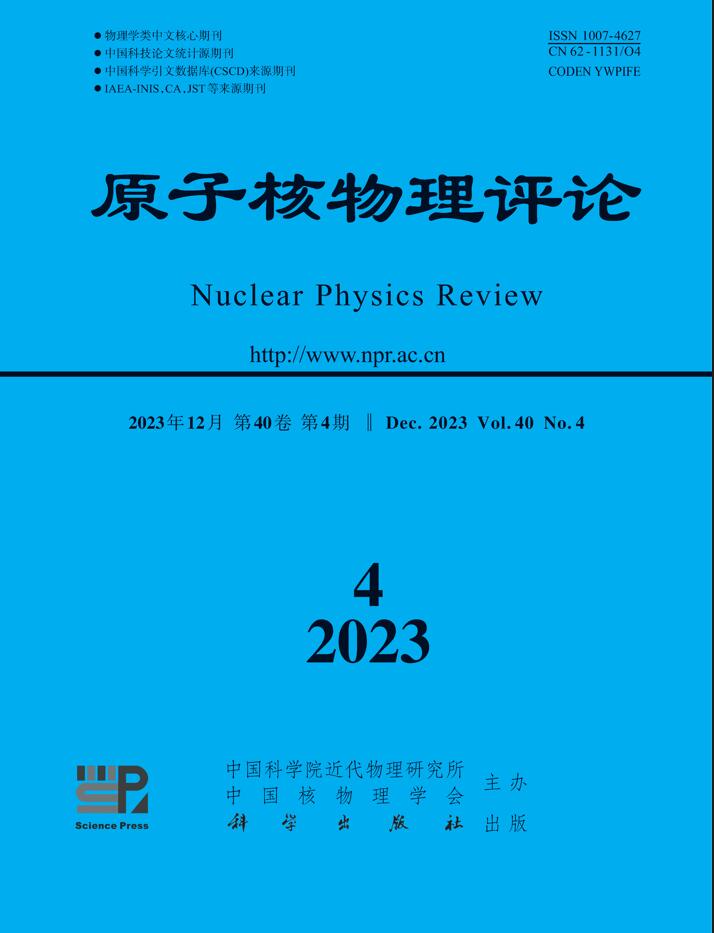


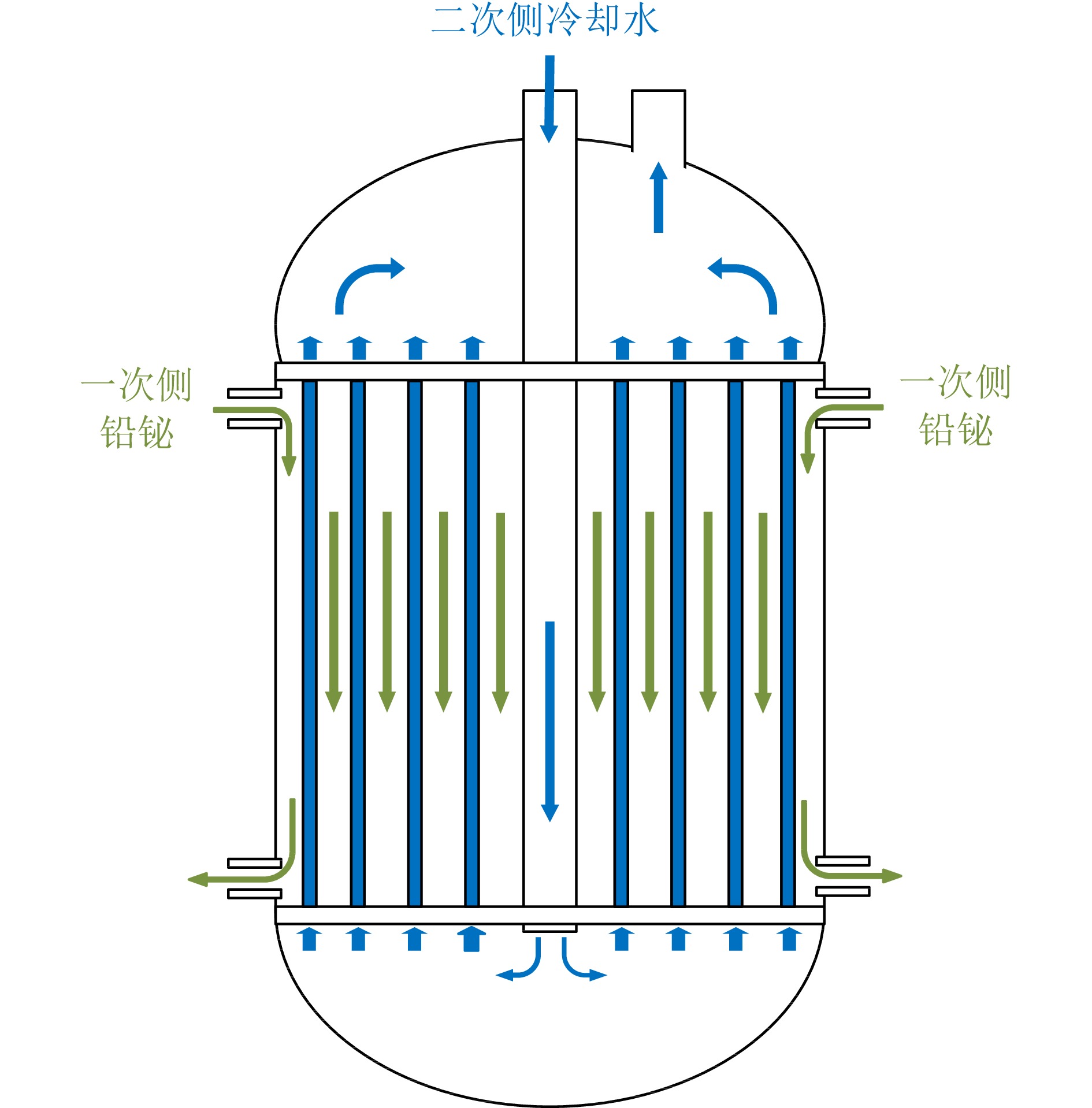

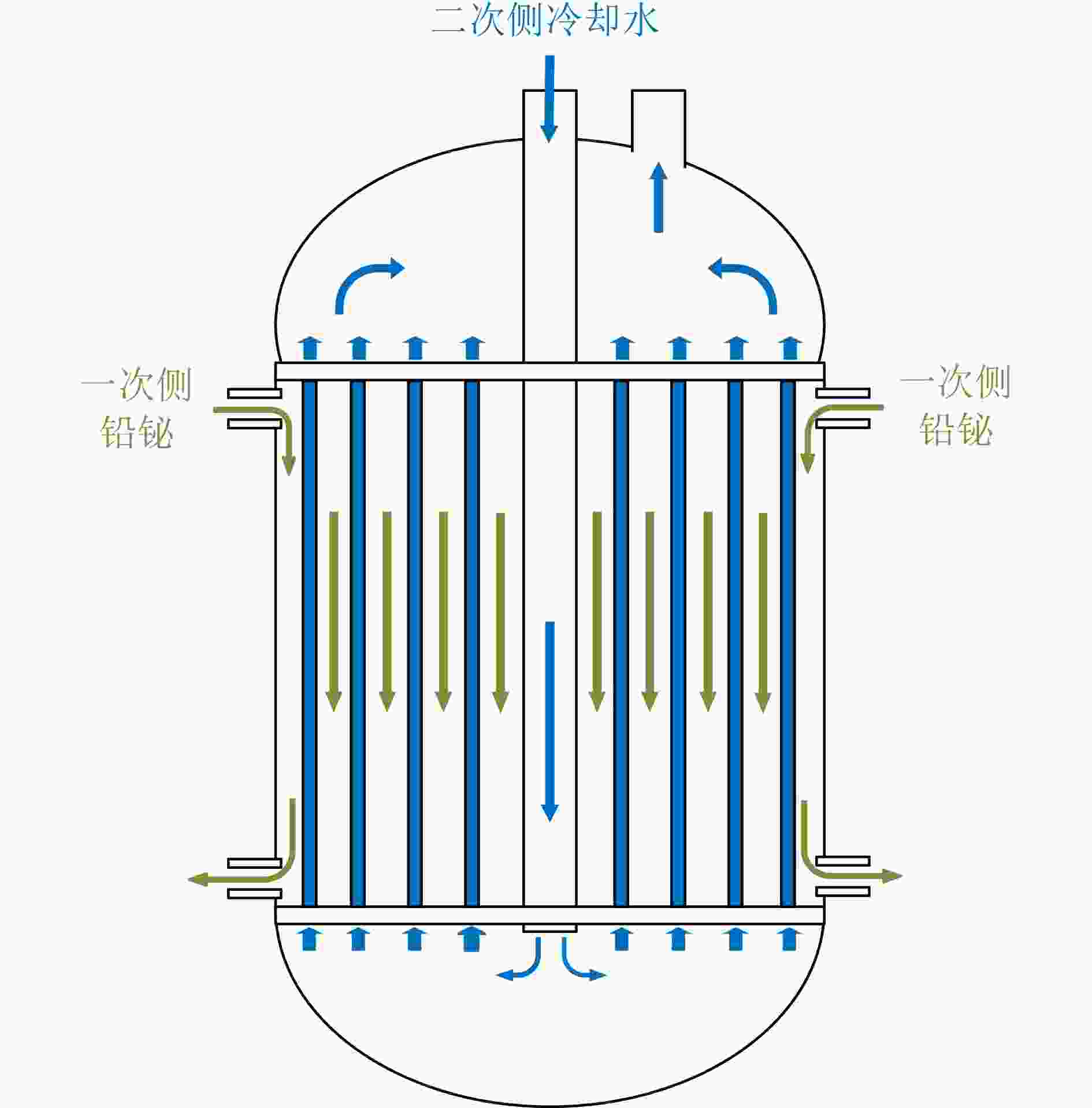
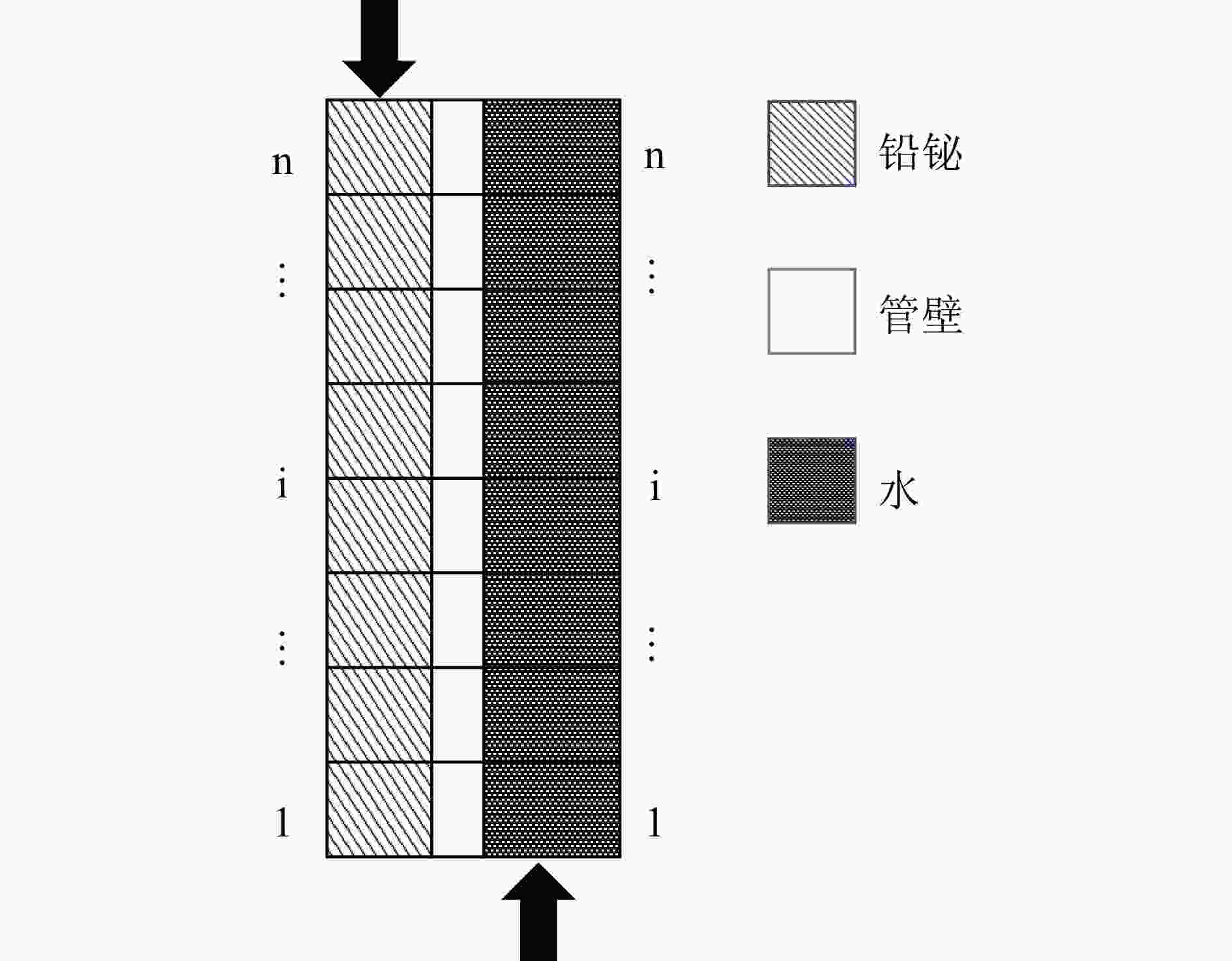
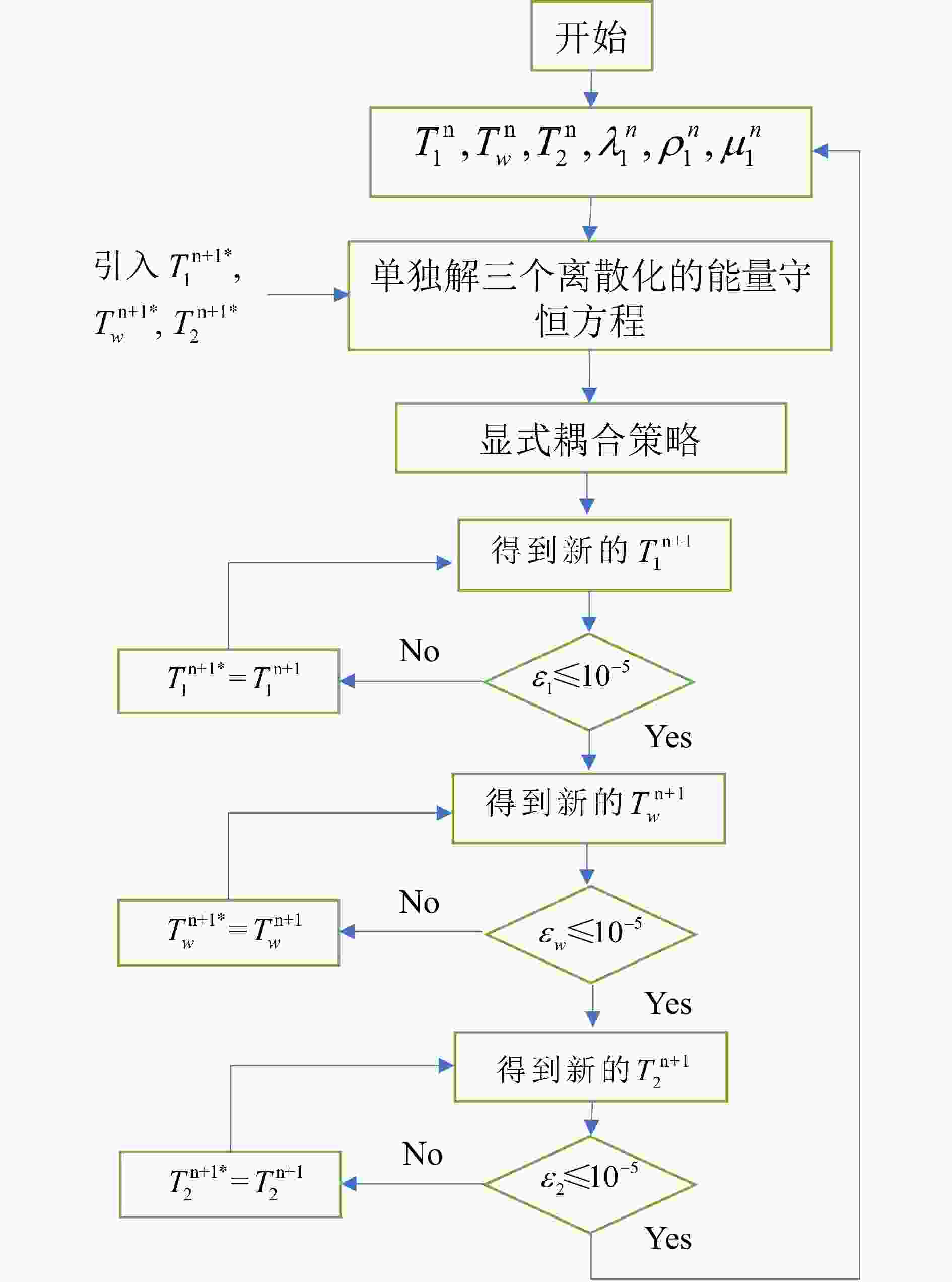
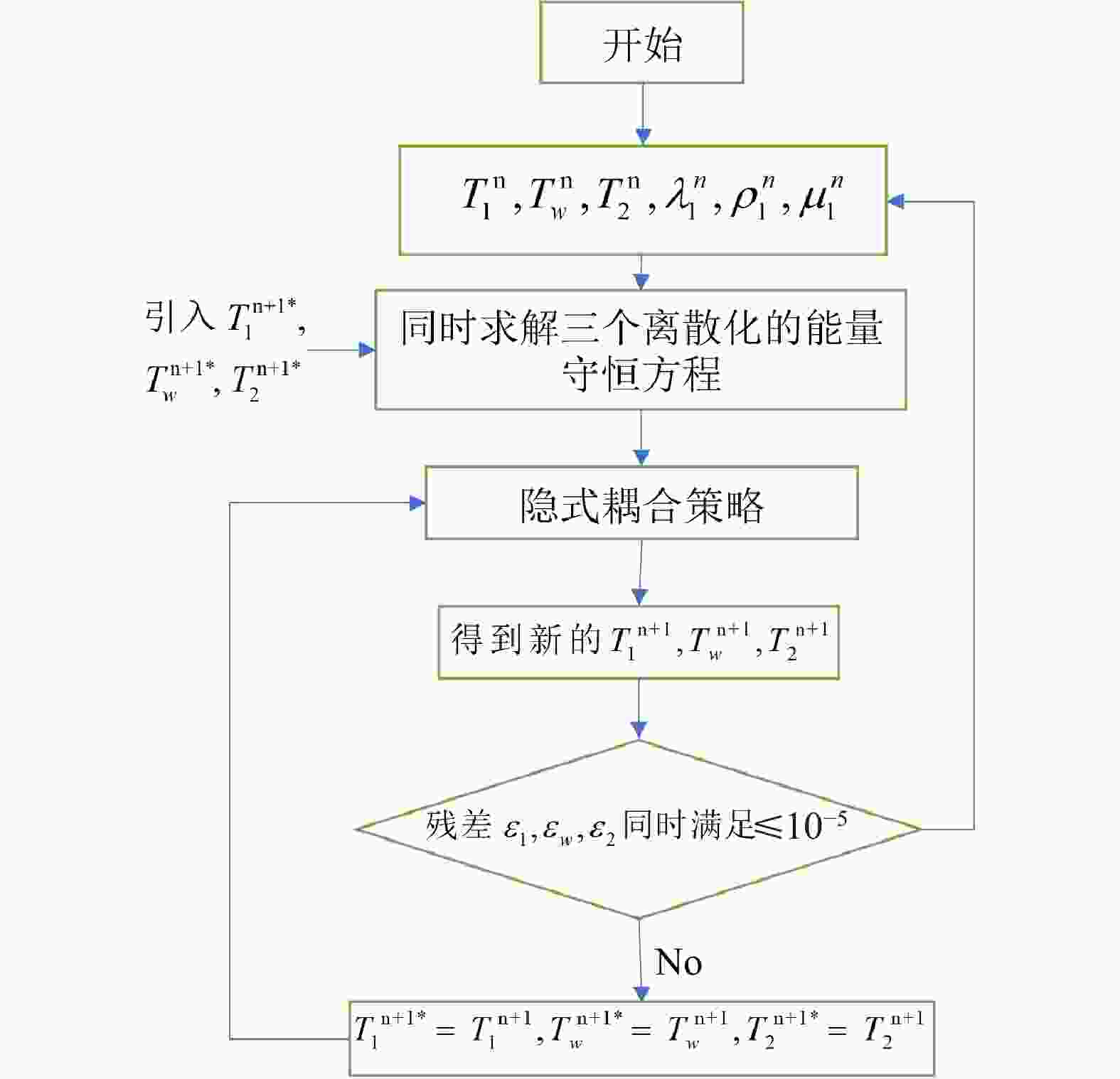
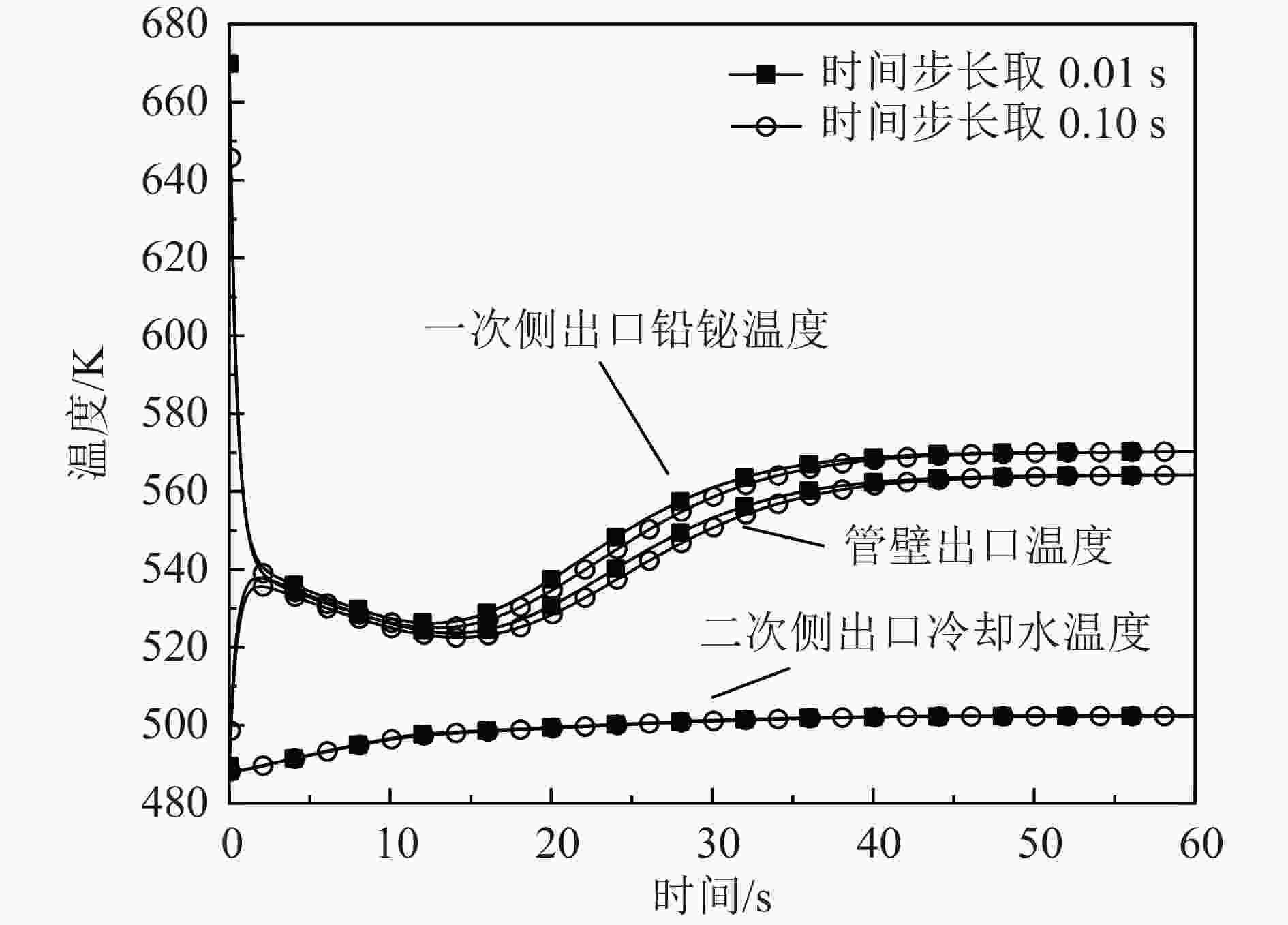

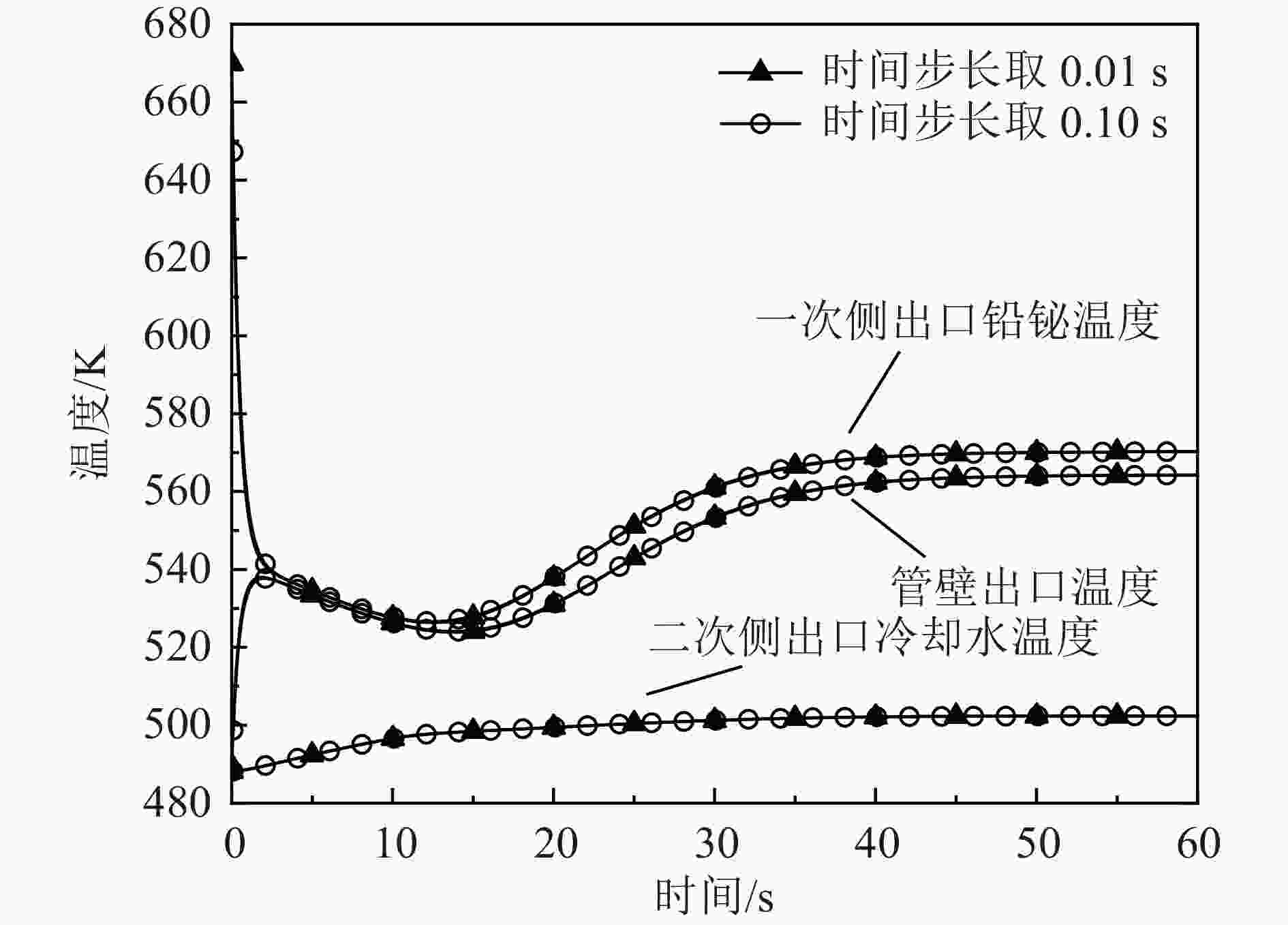
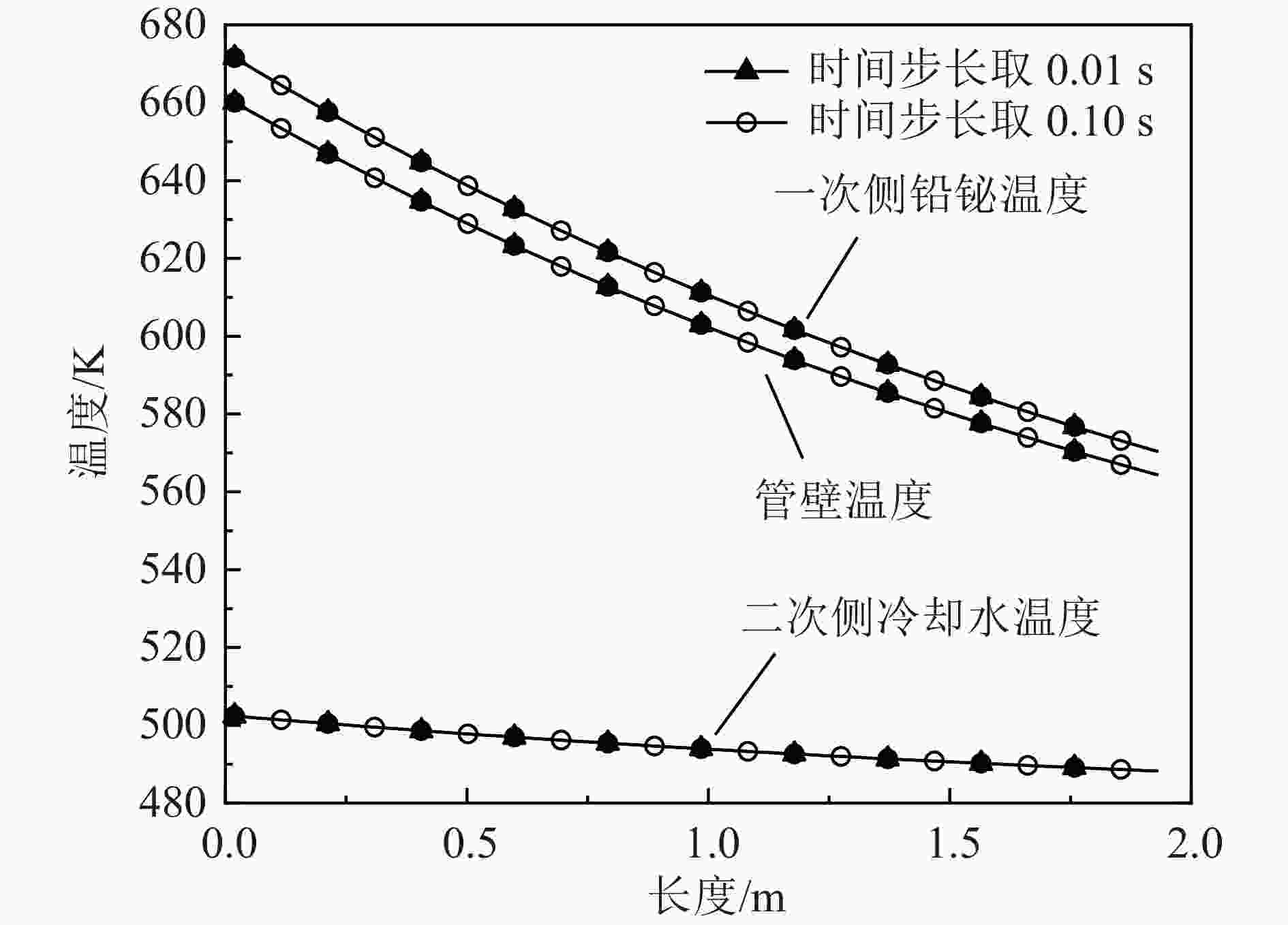
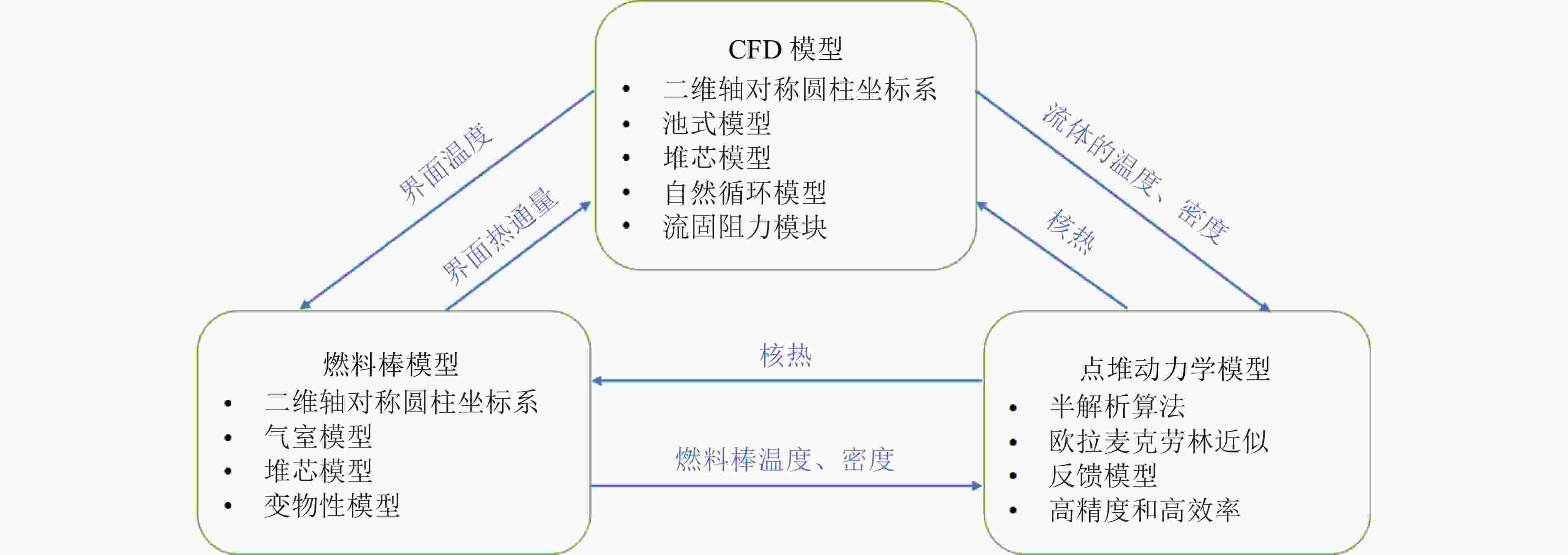
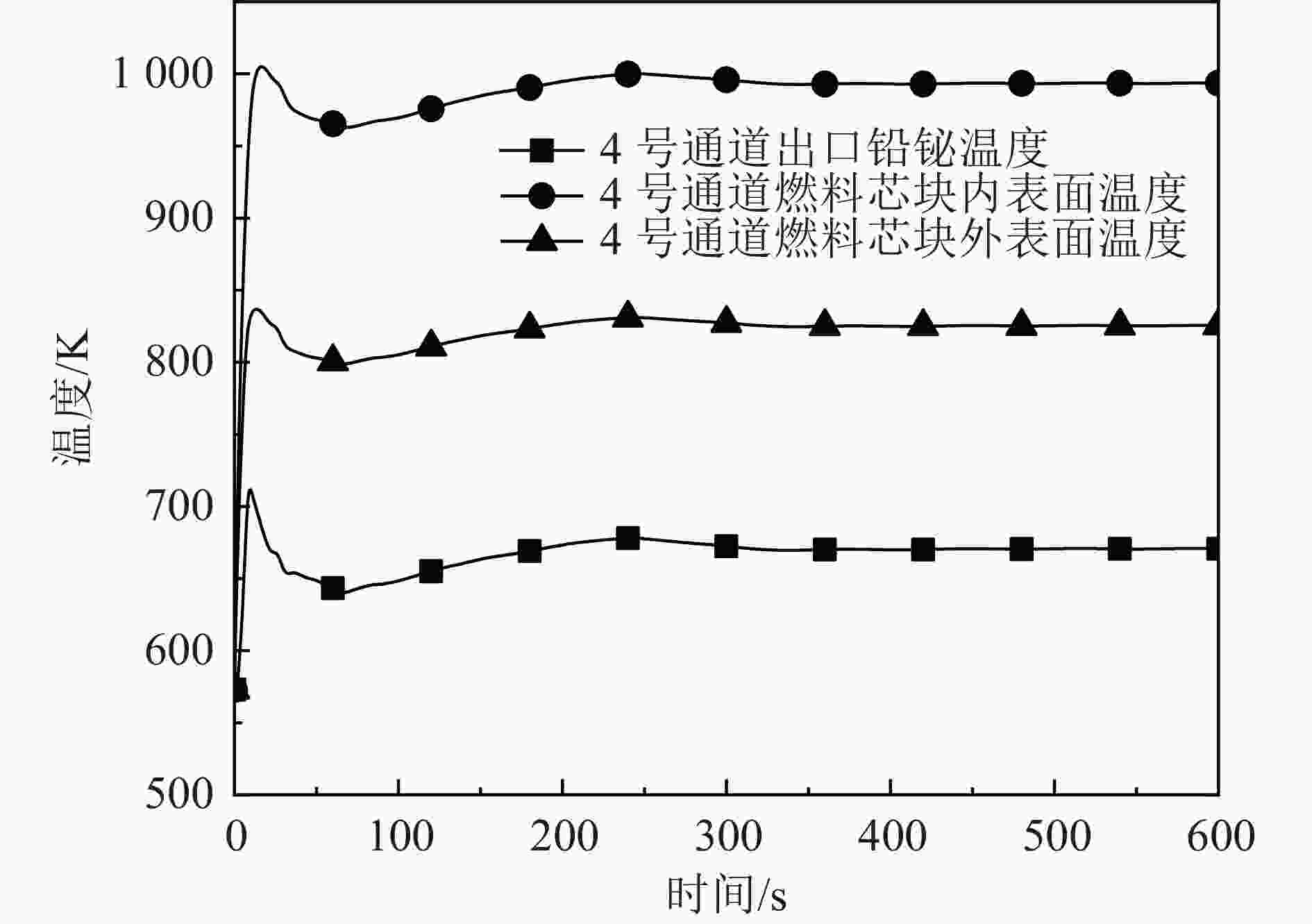
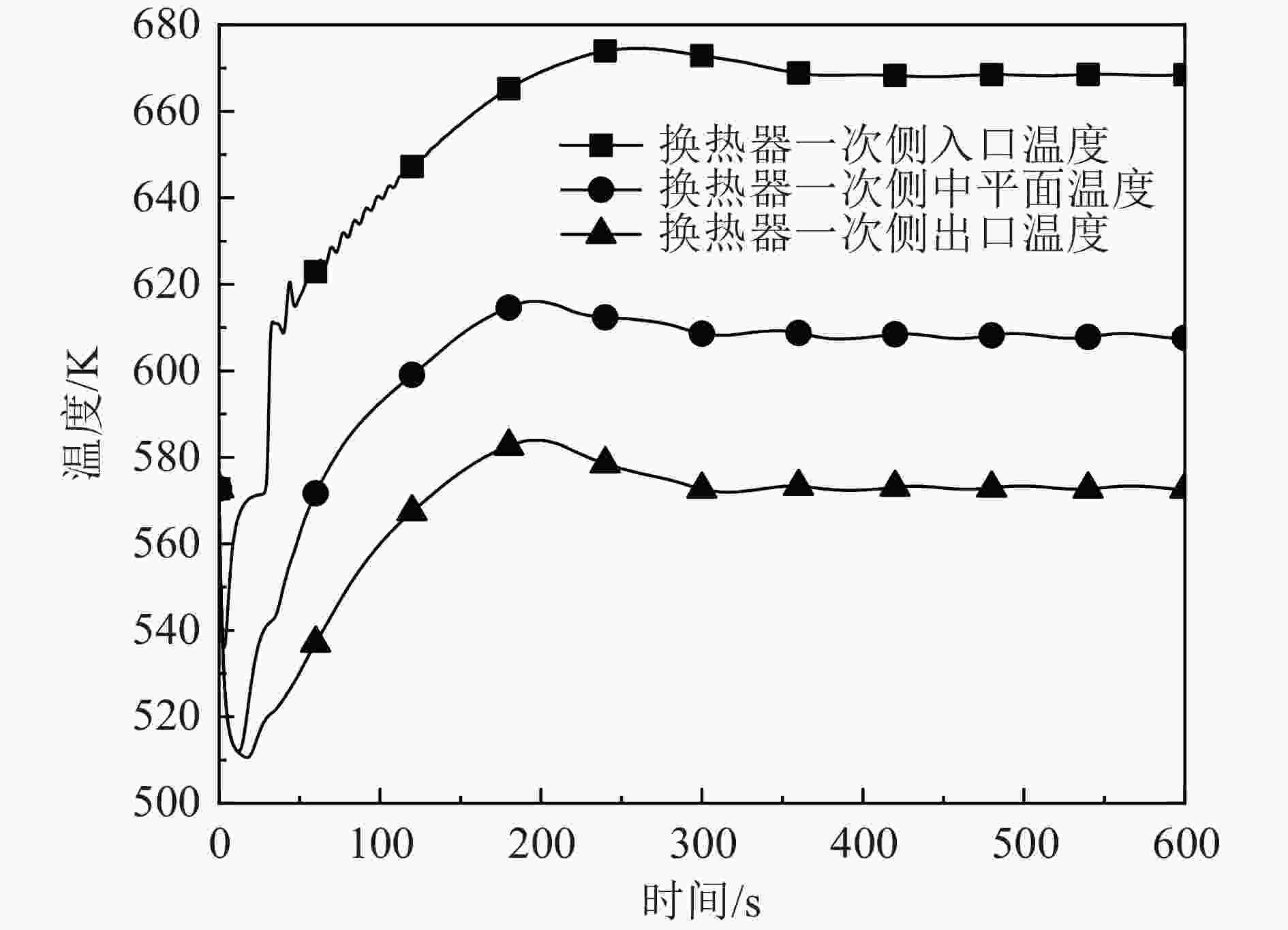
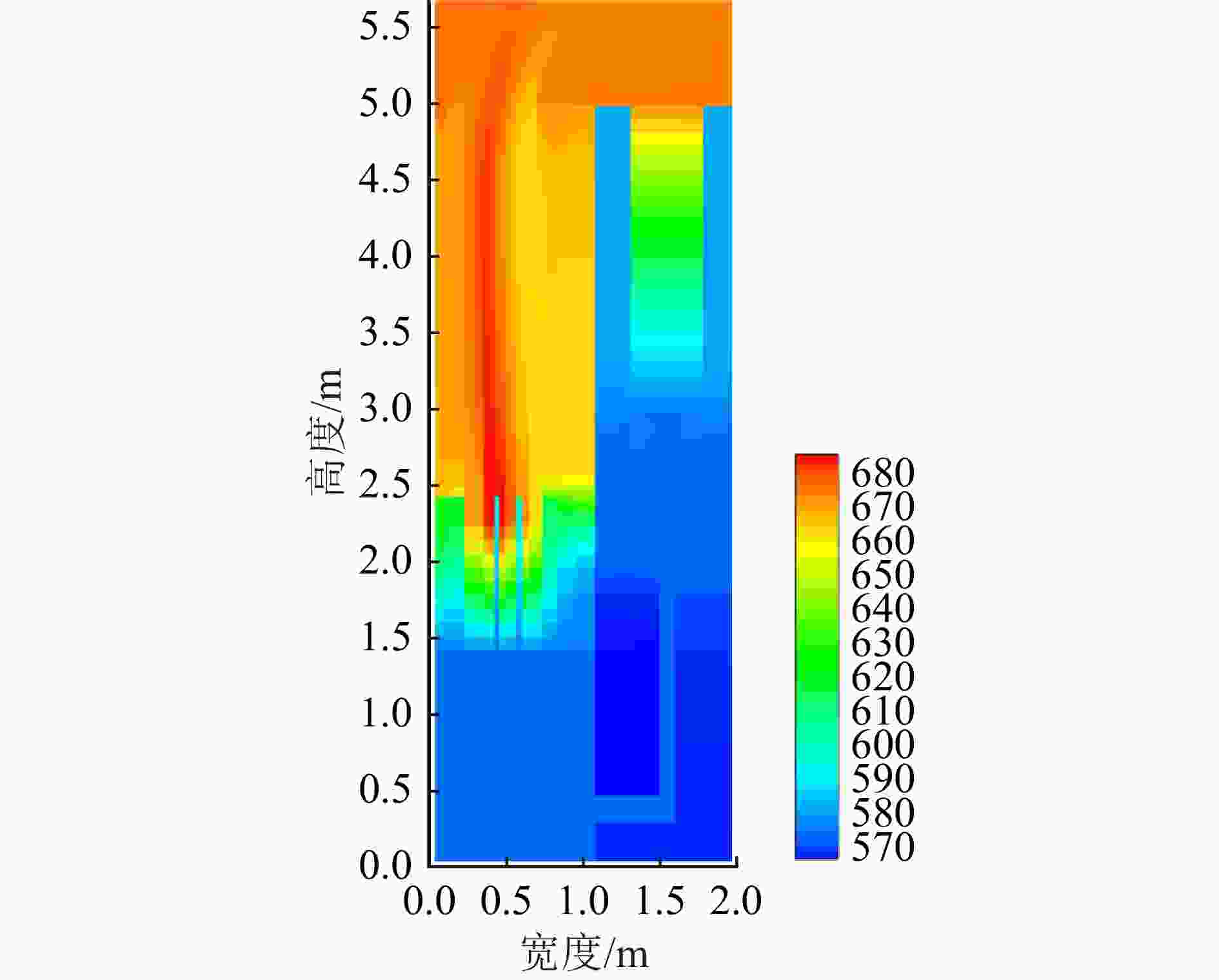
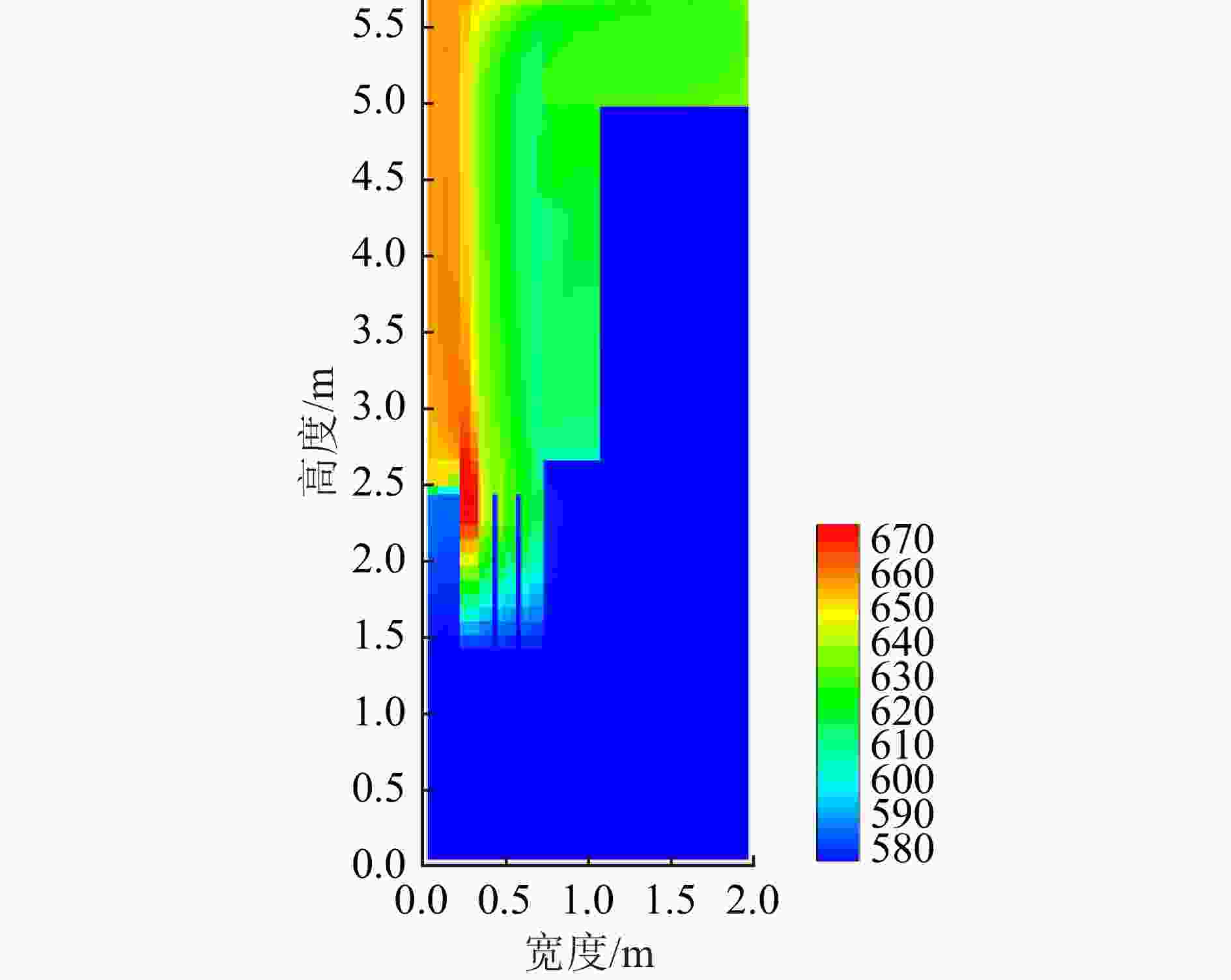
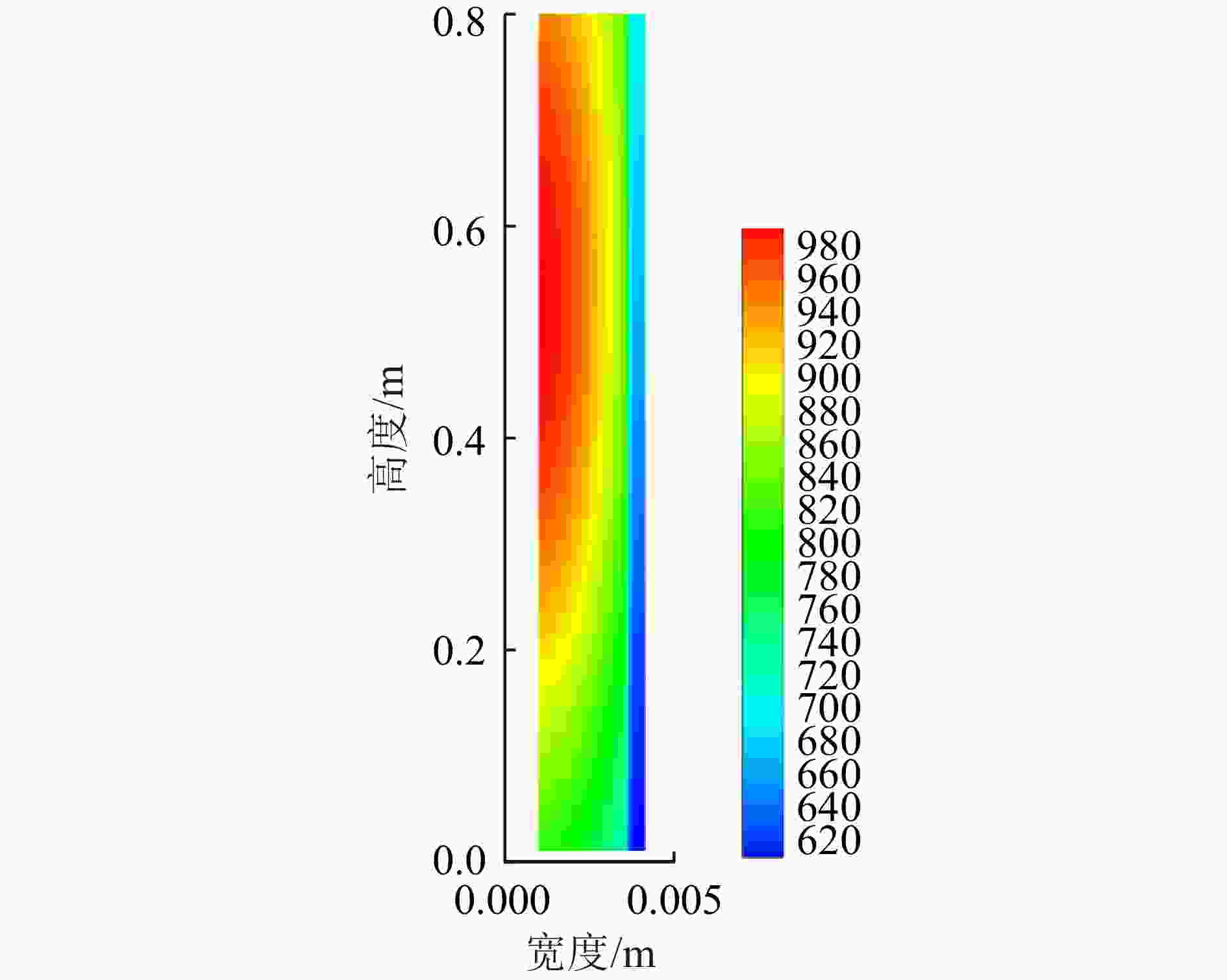
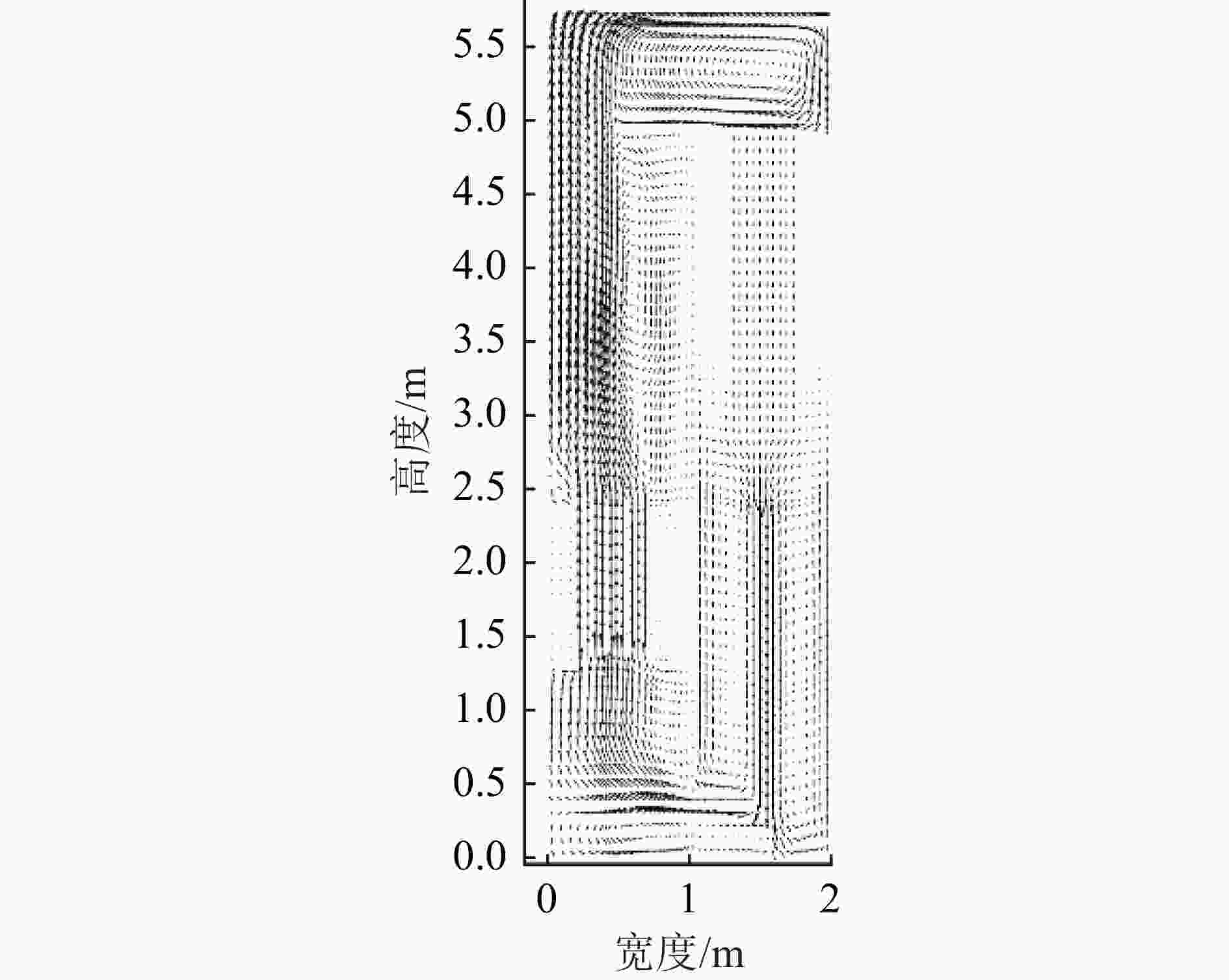
 甘公网安备 62010202000723号
甘公网安备 62010202000723号 DownLoad:
DownLoad:

